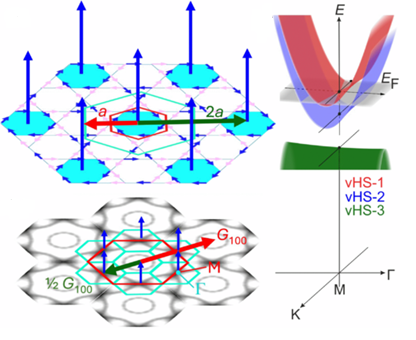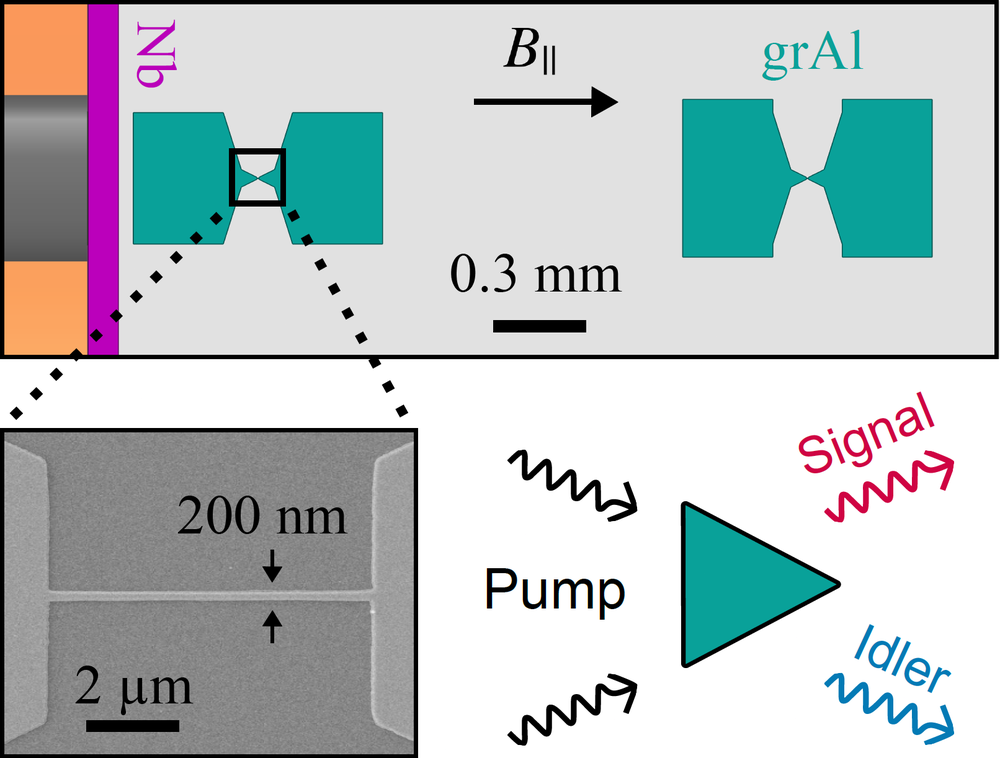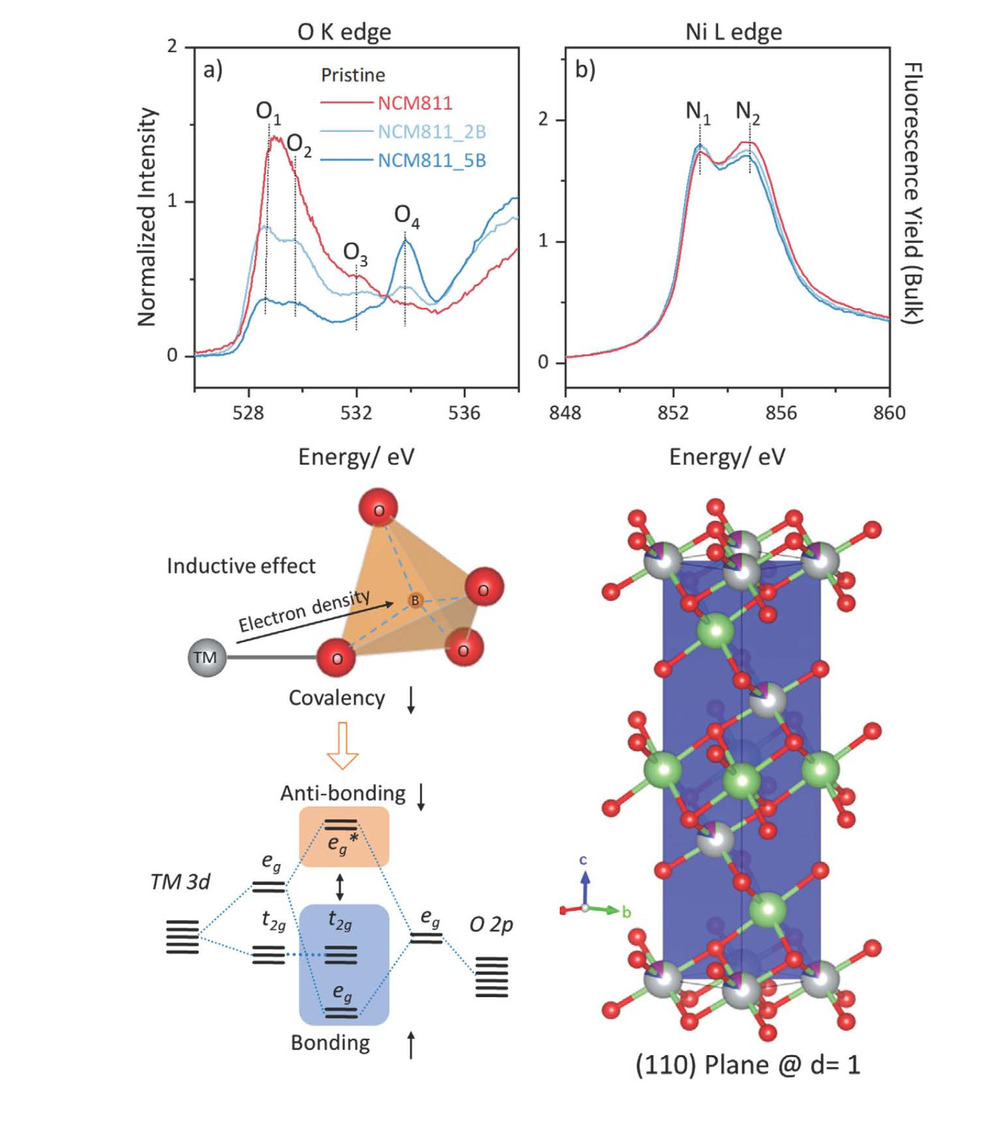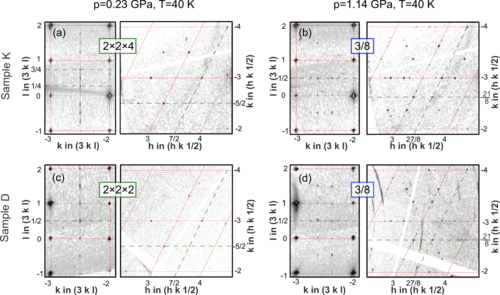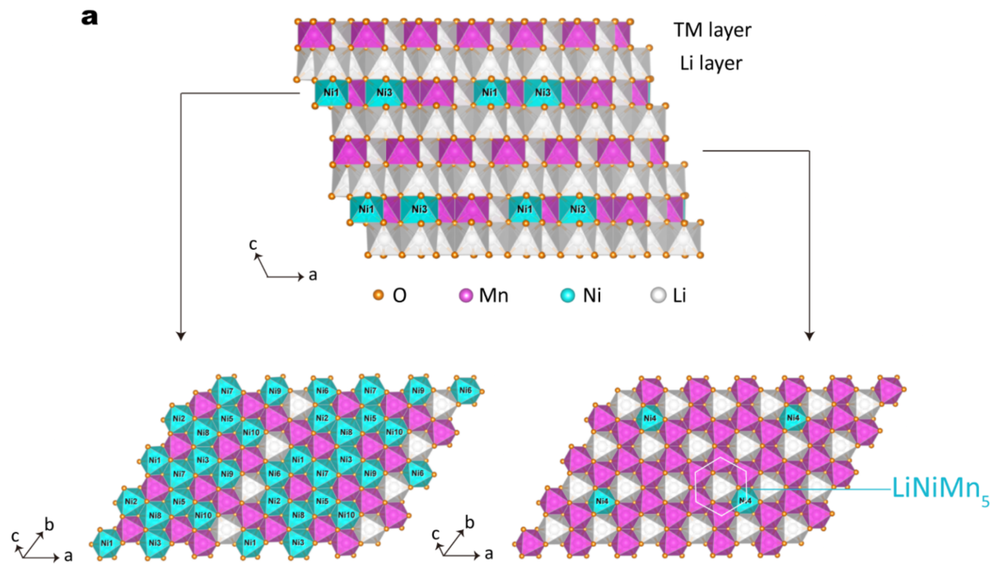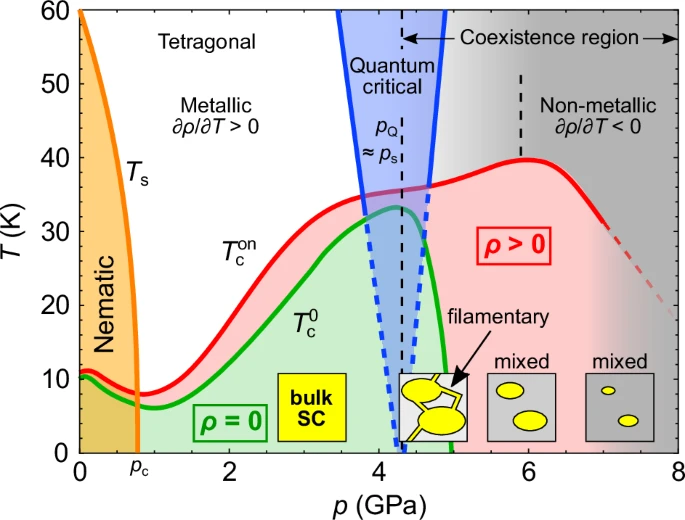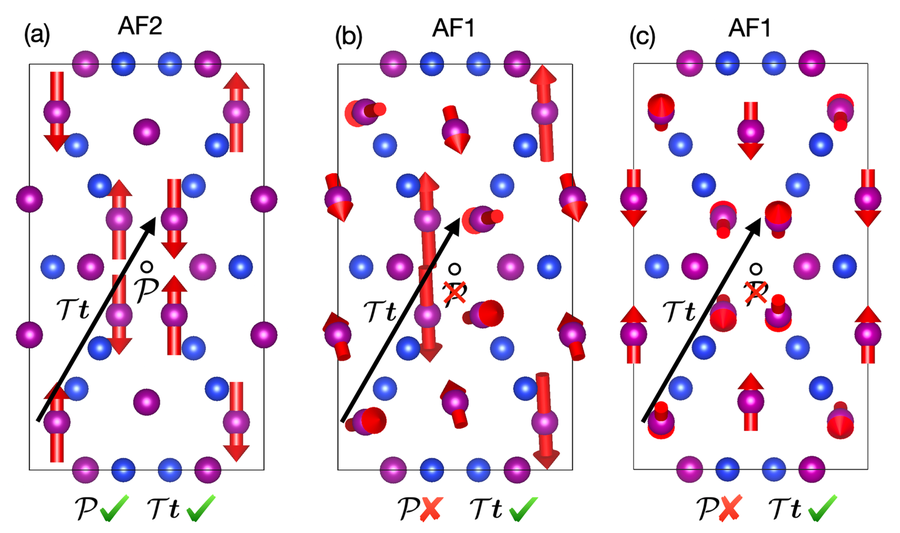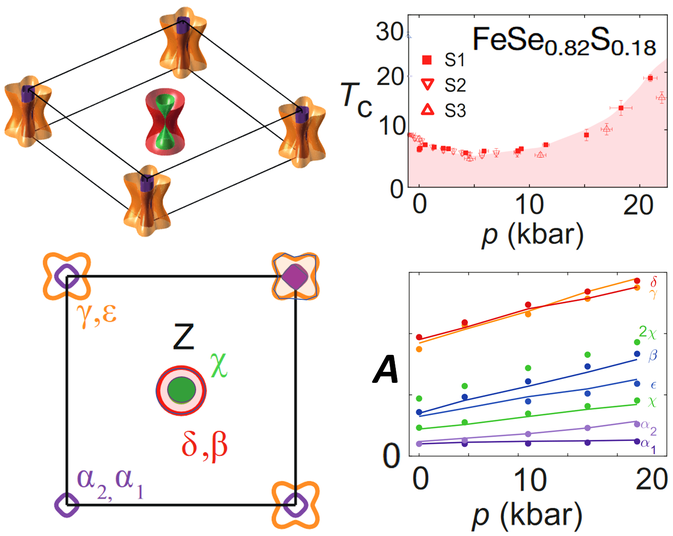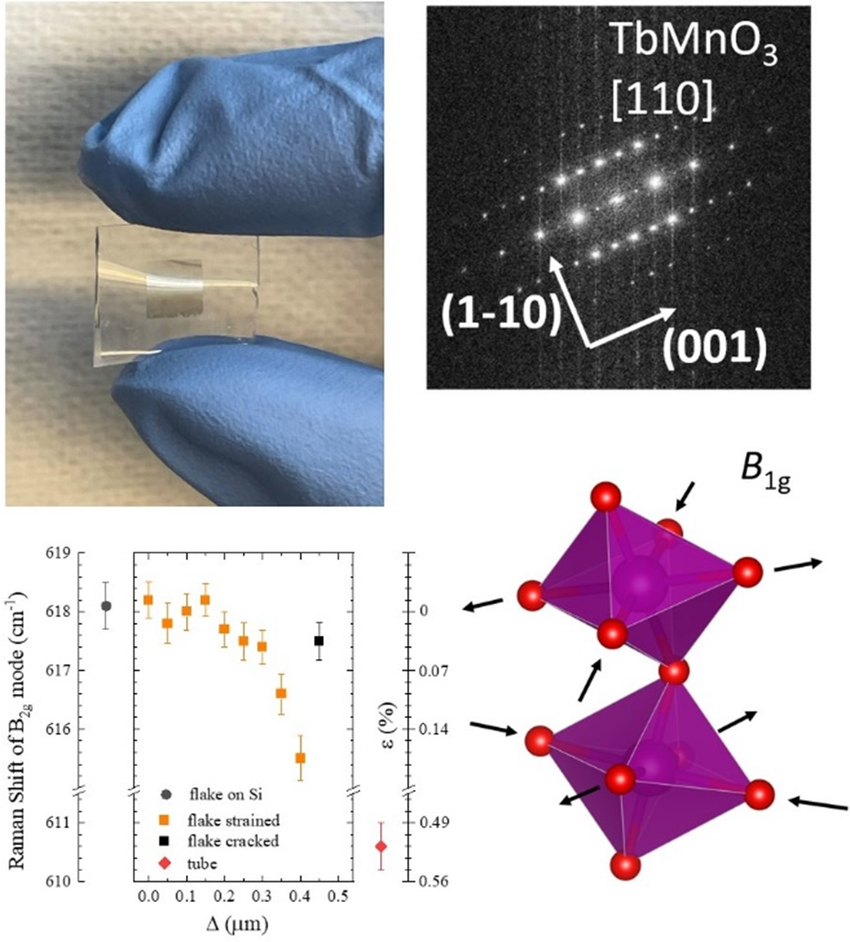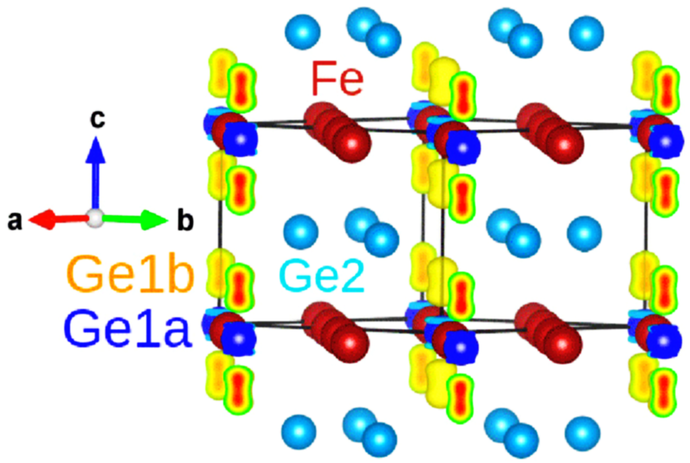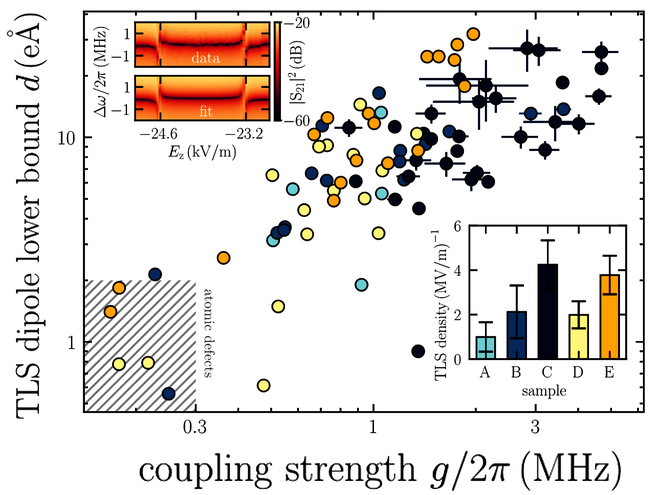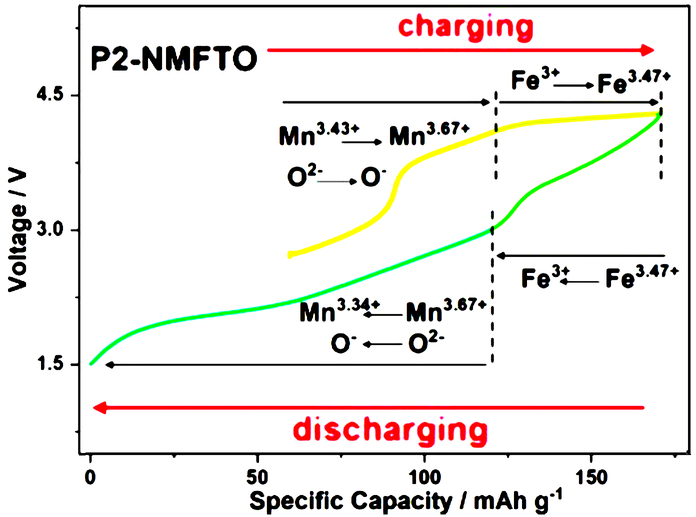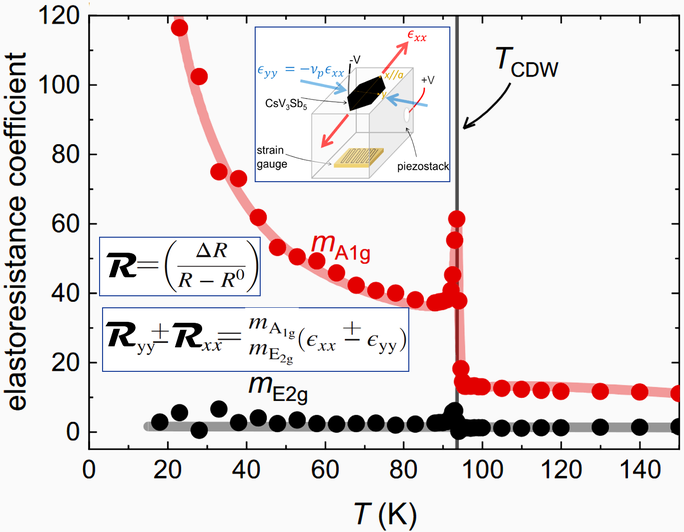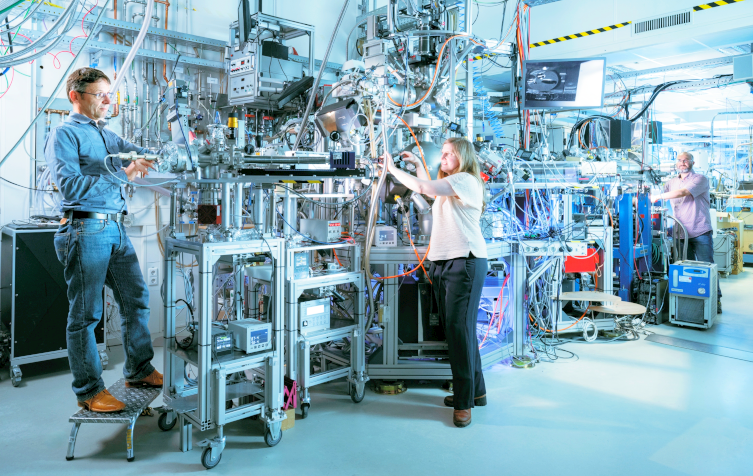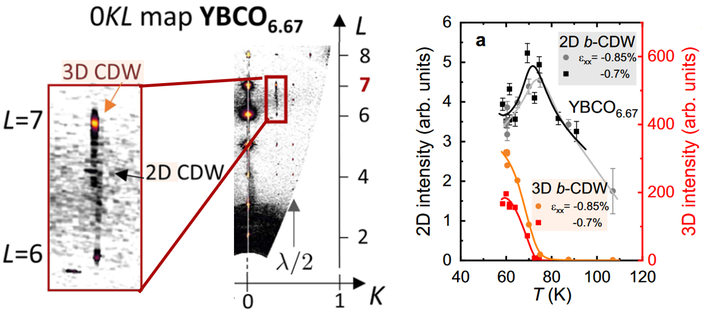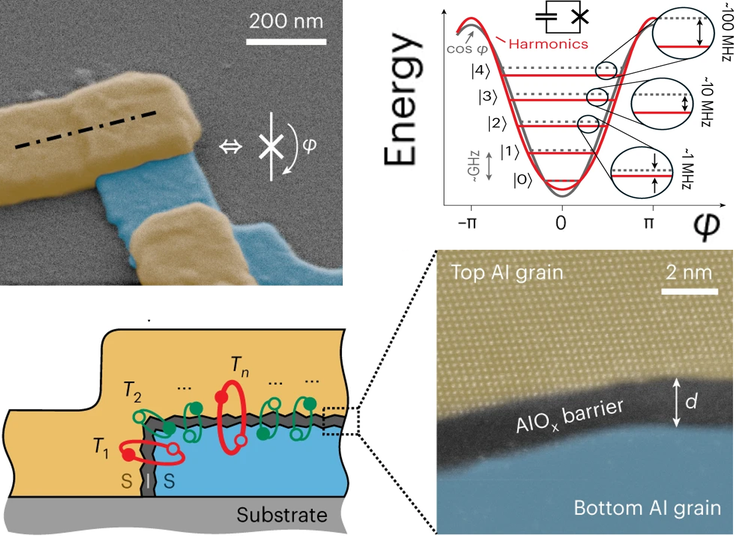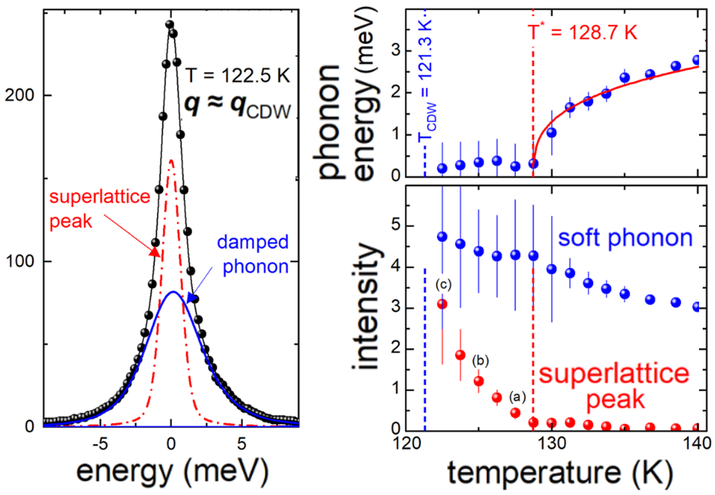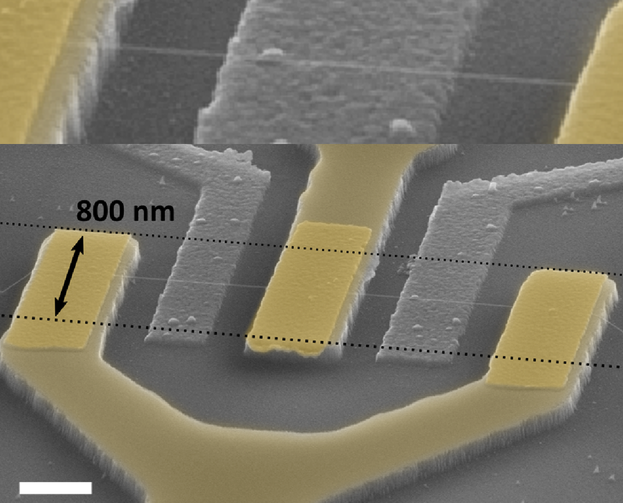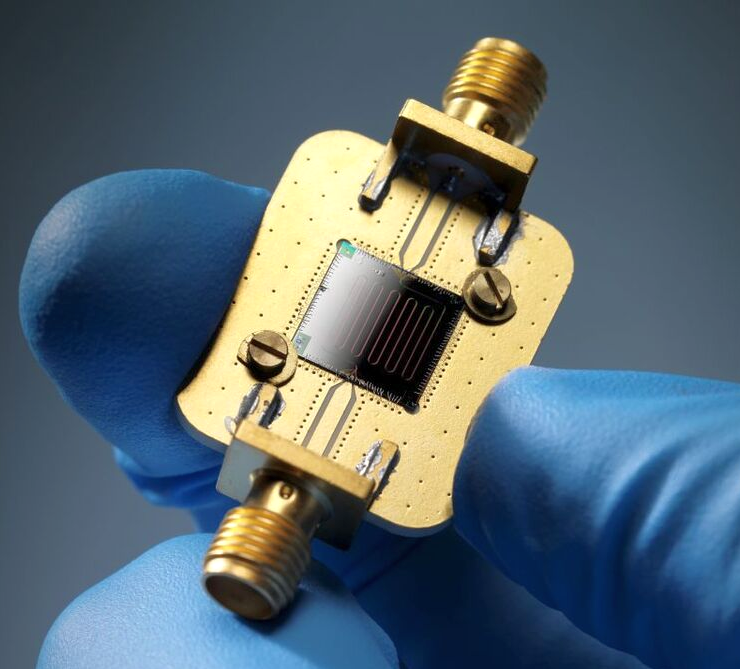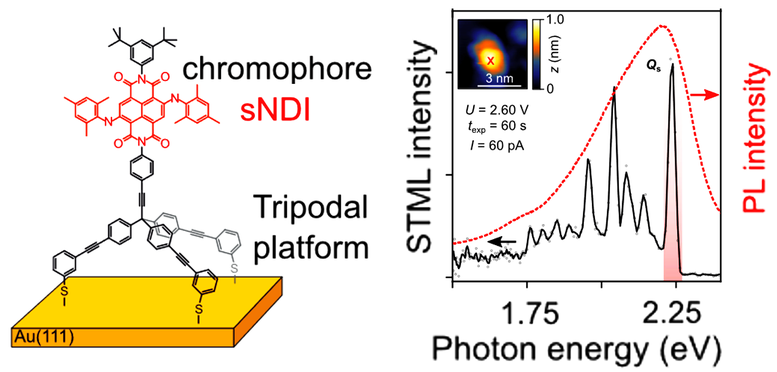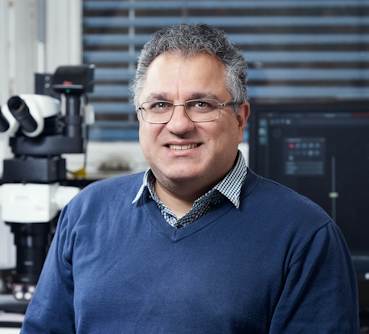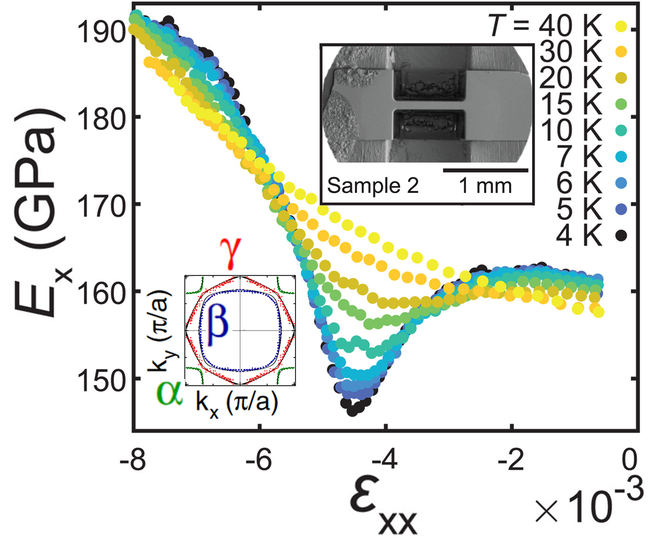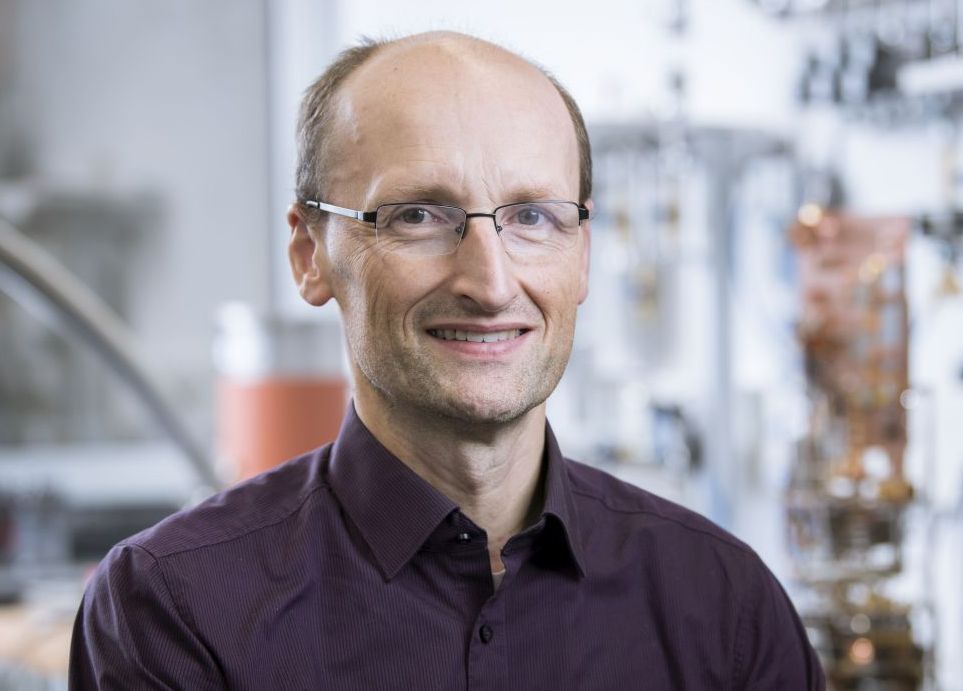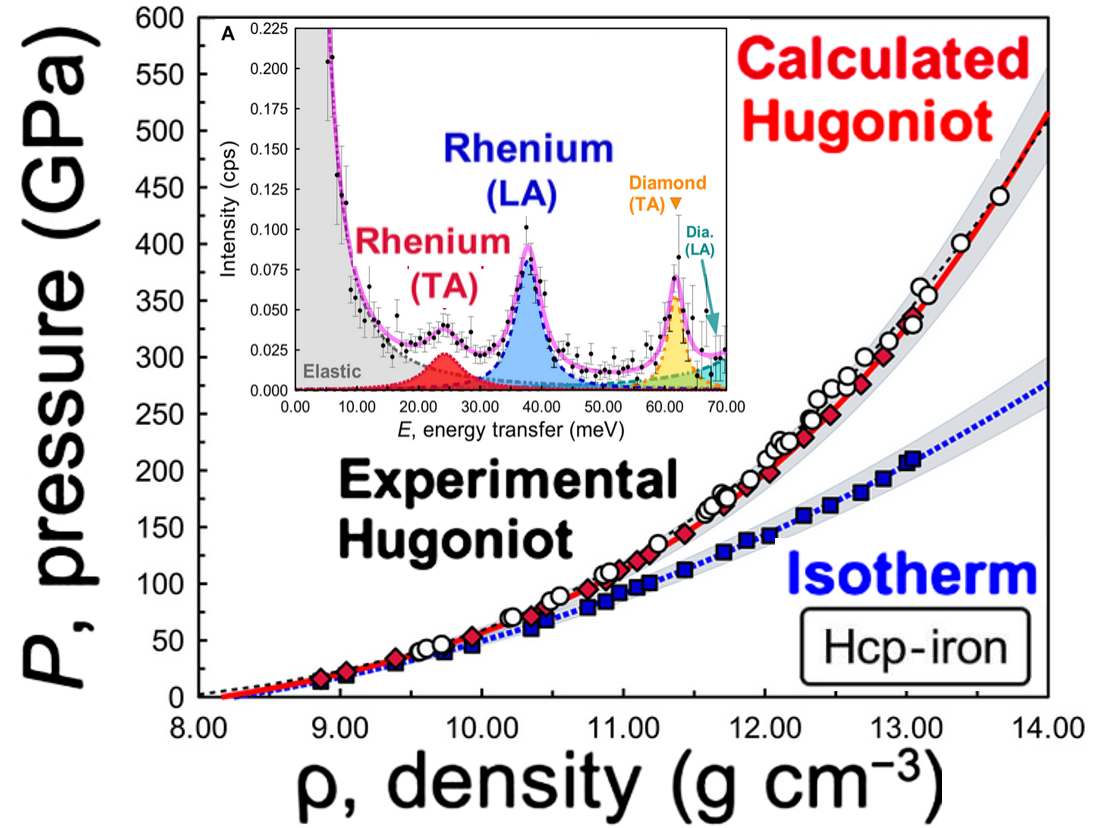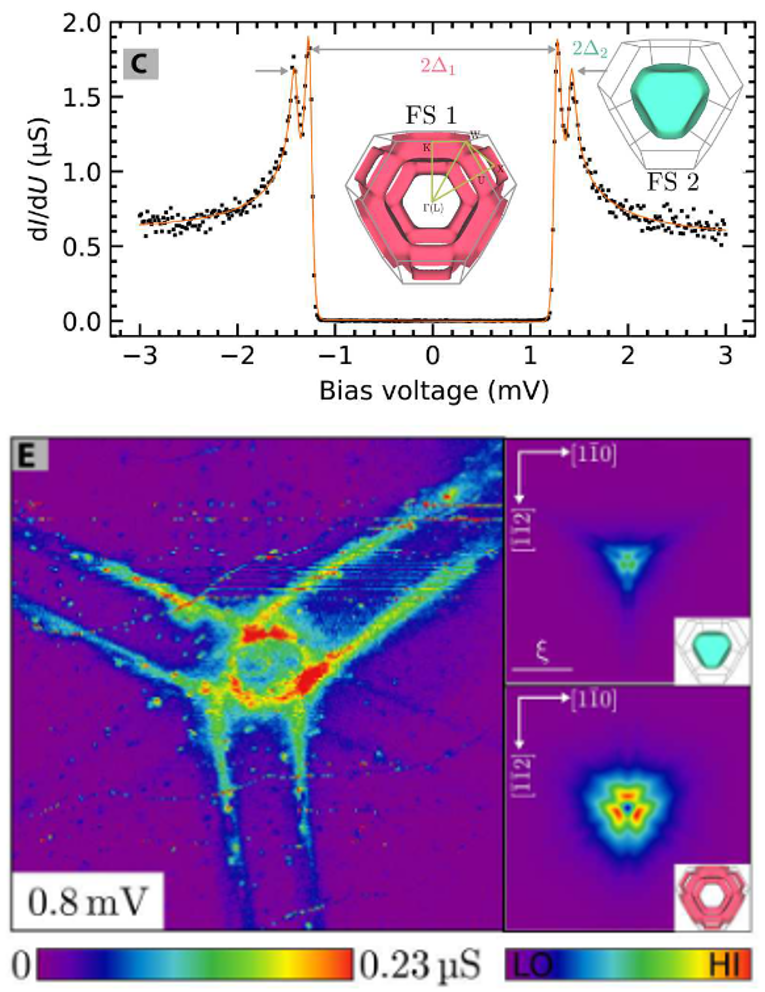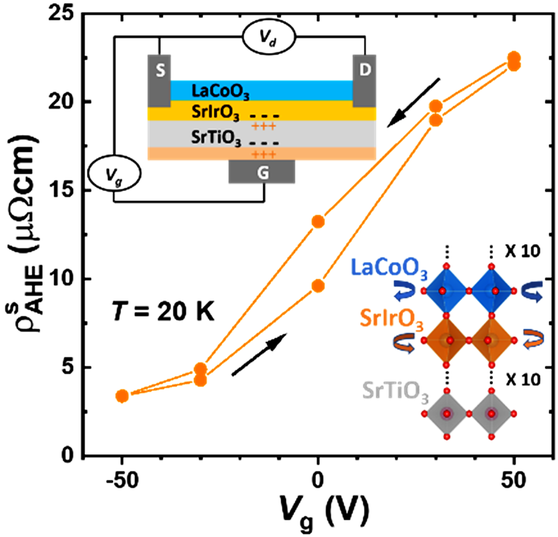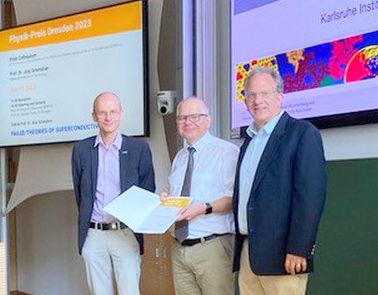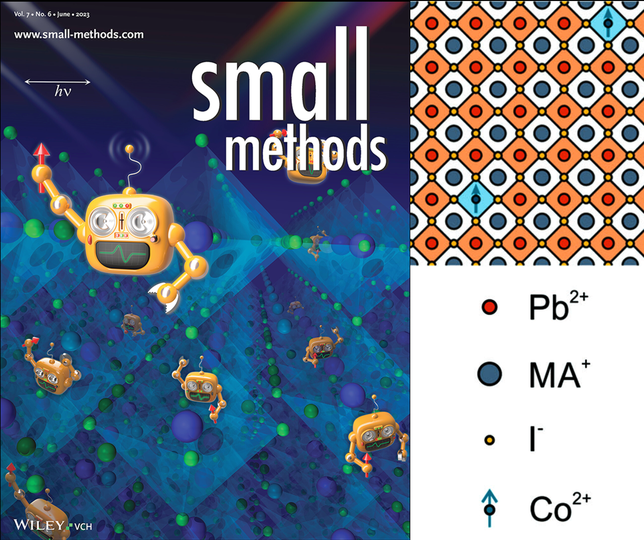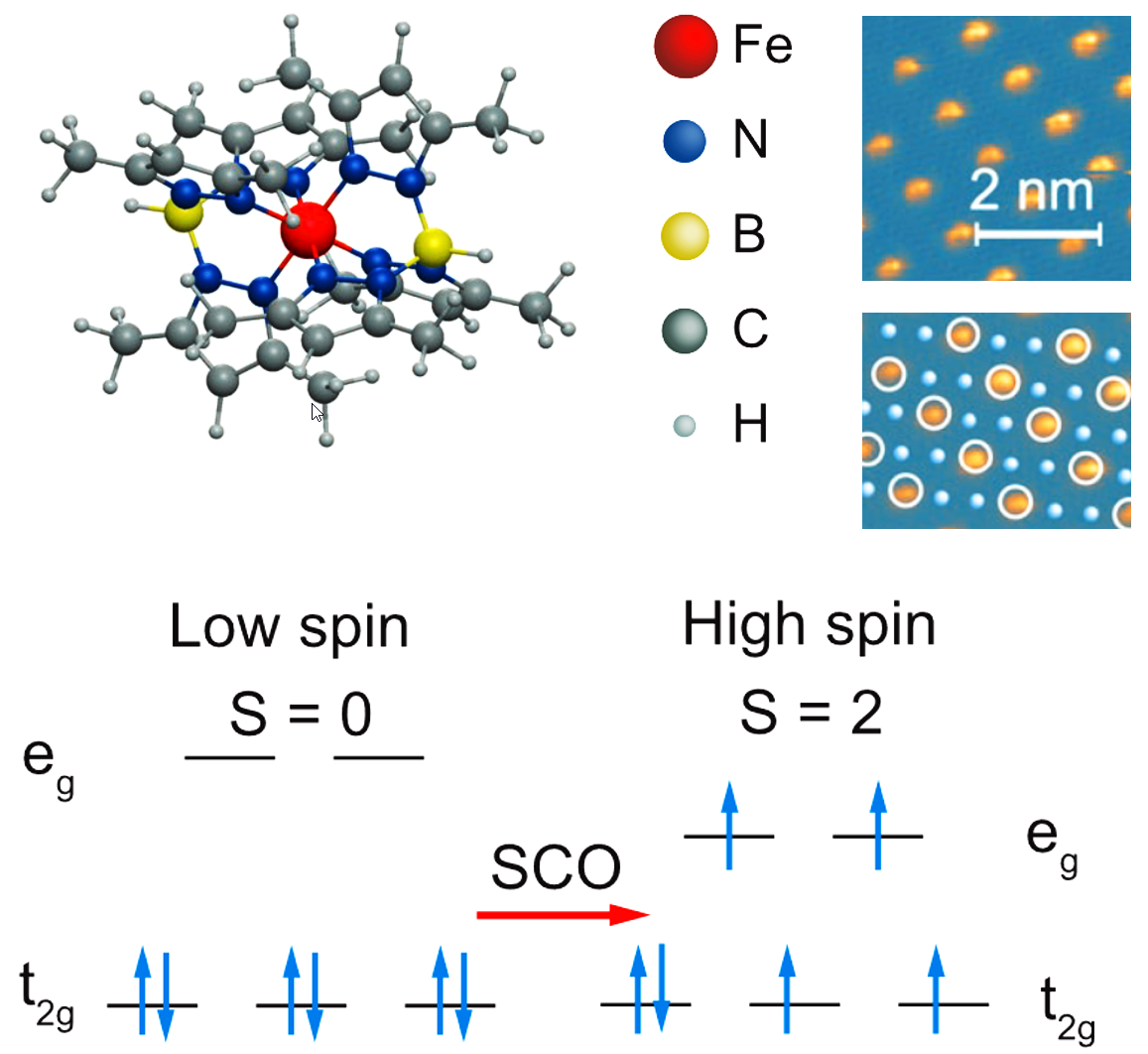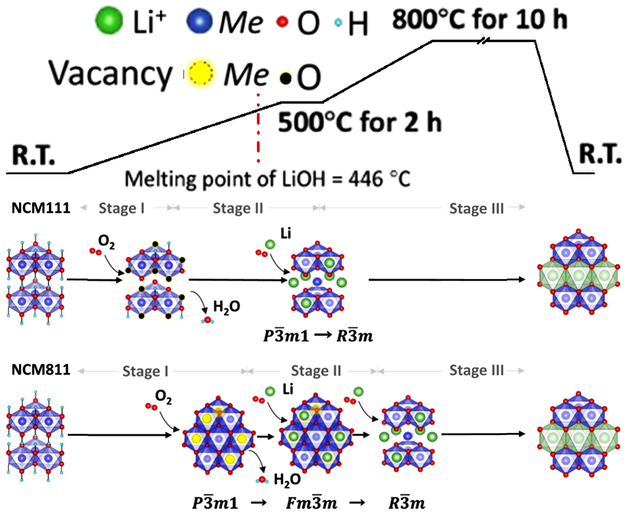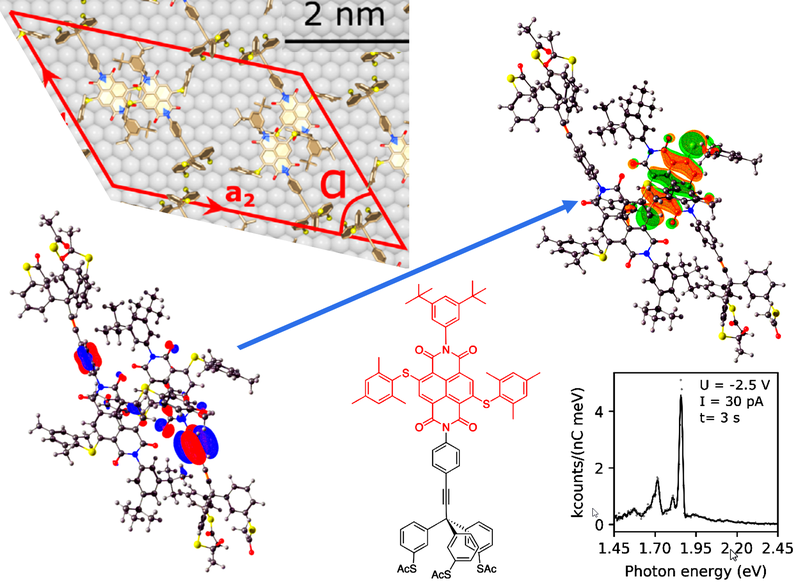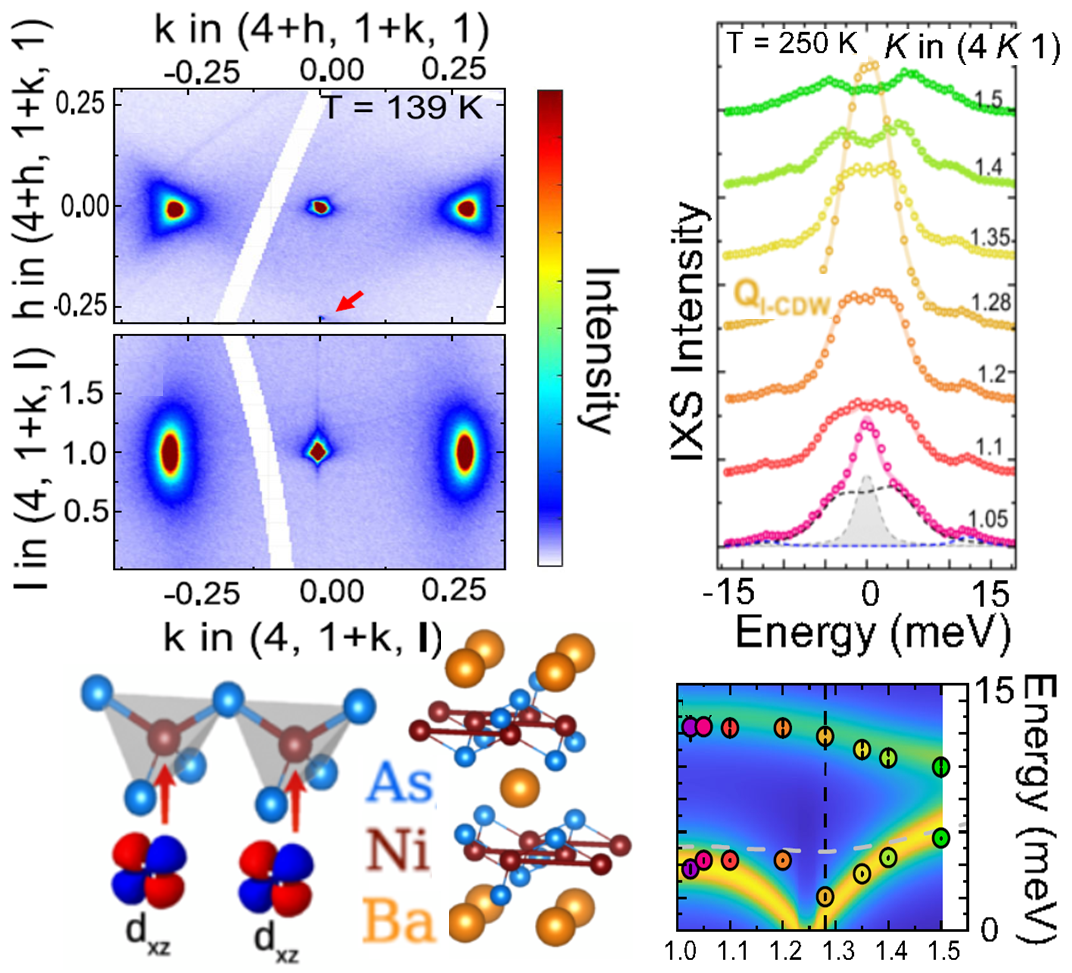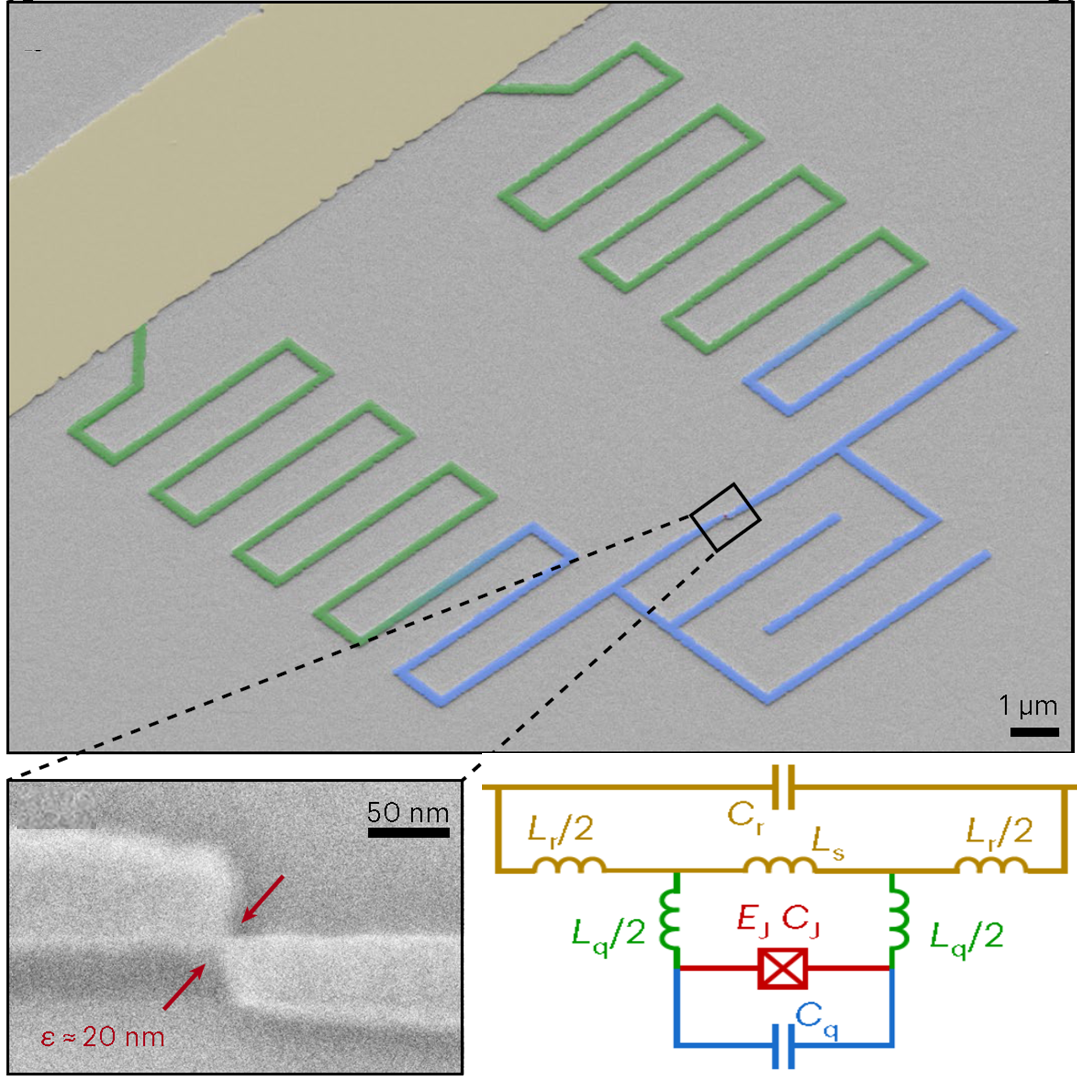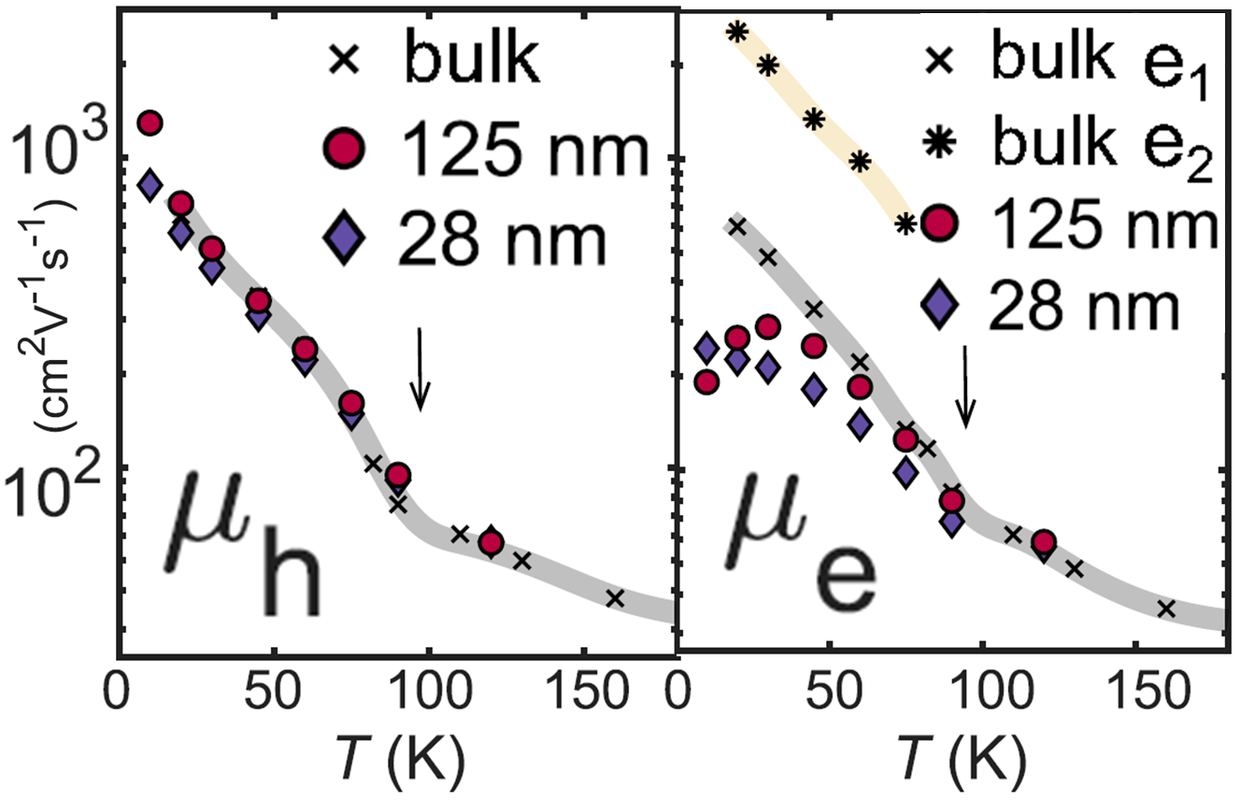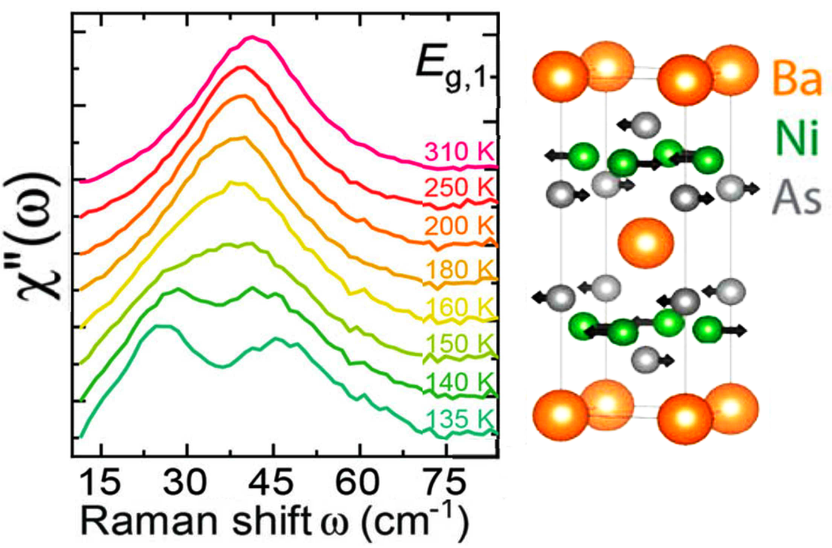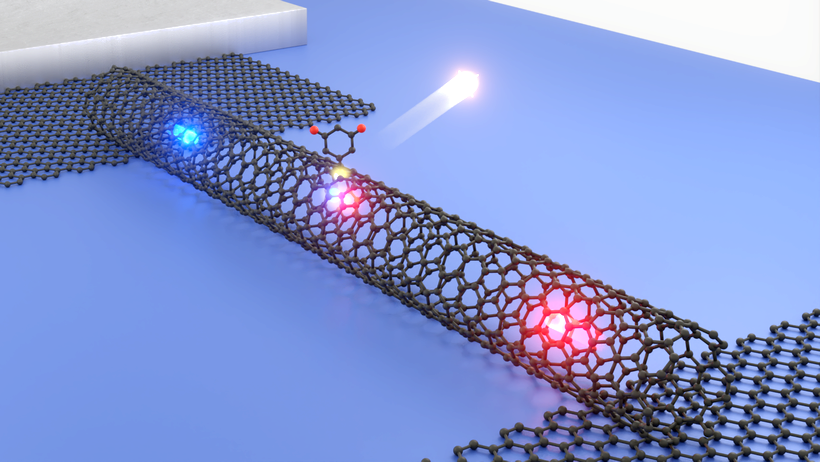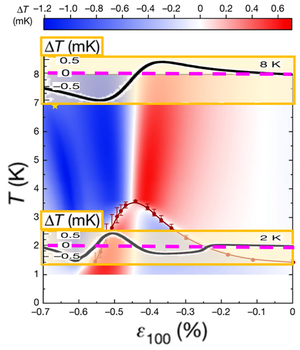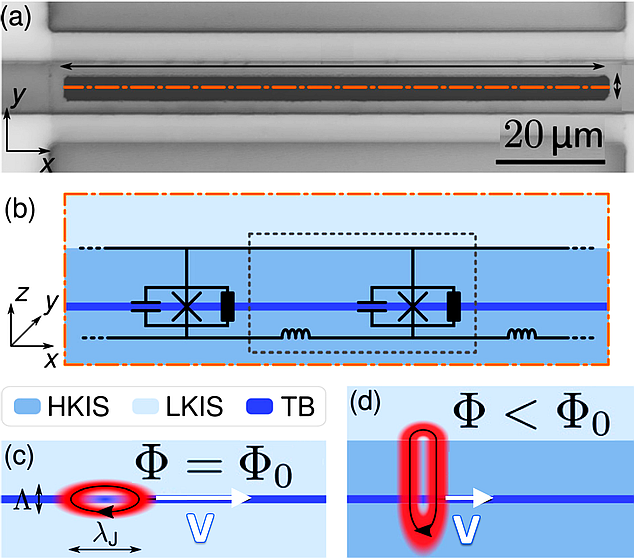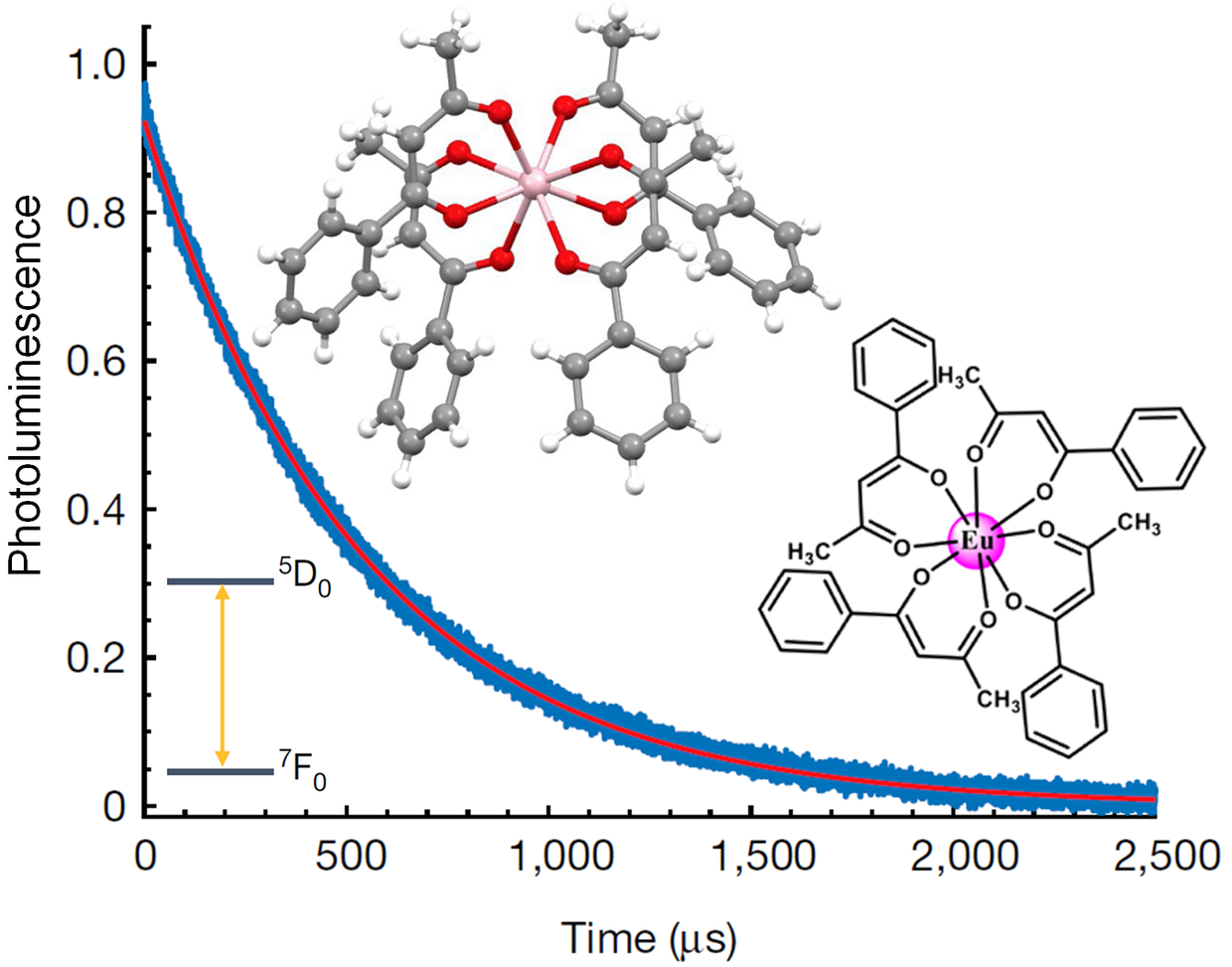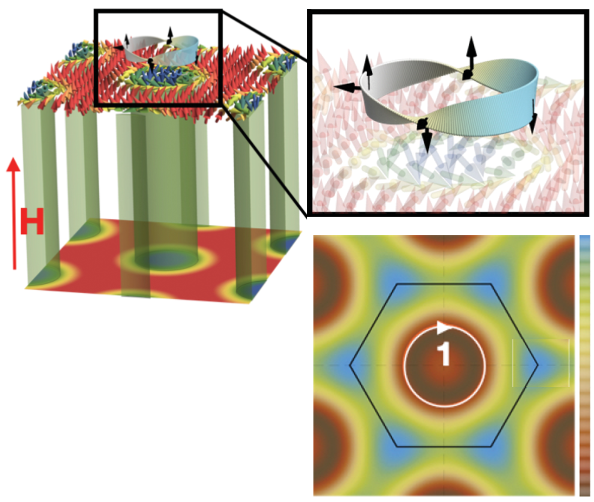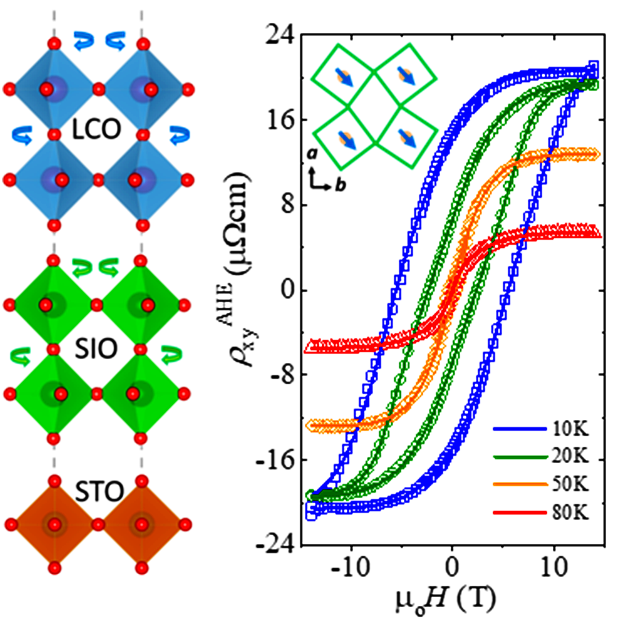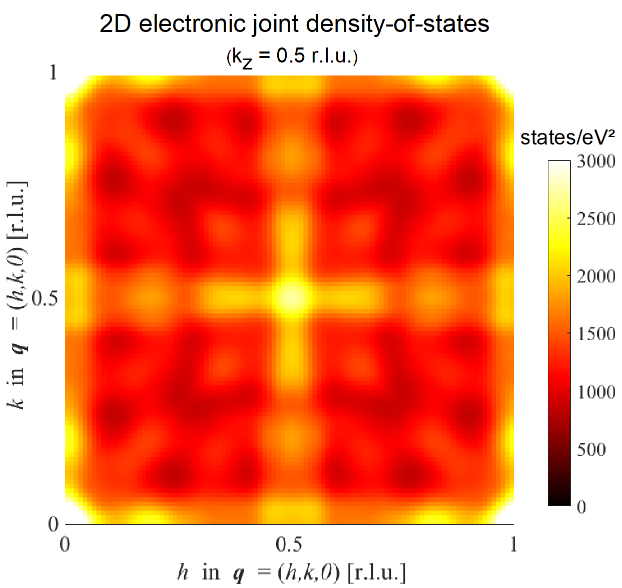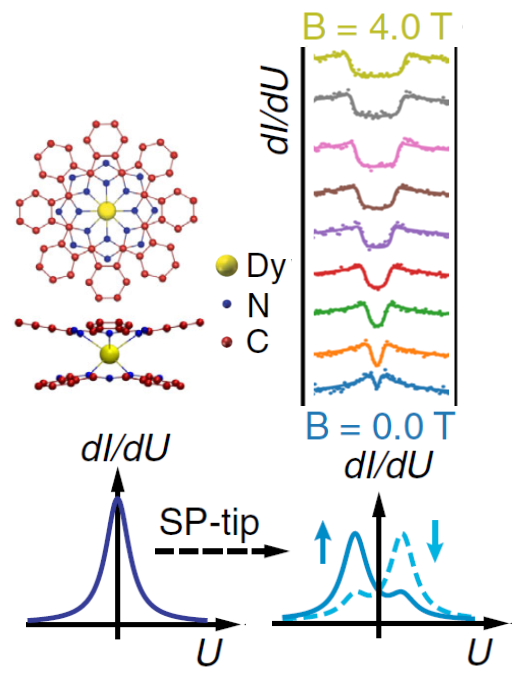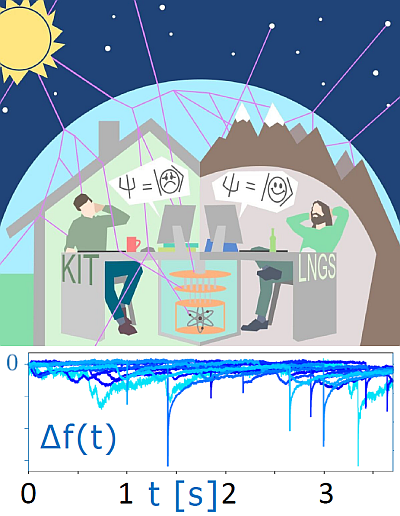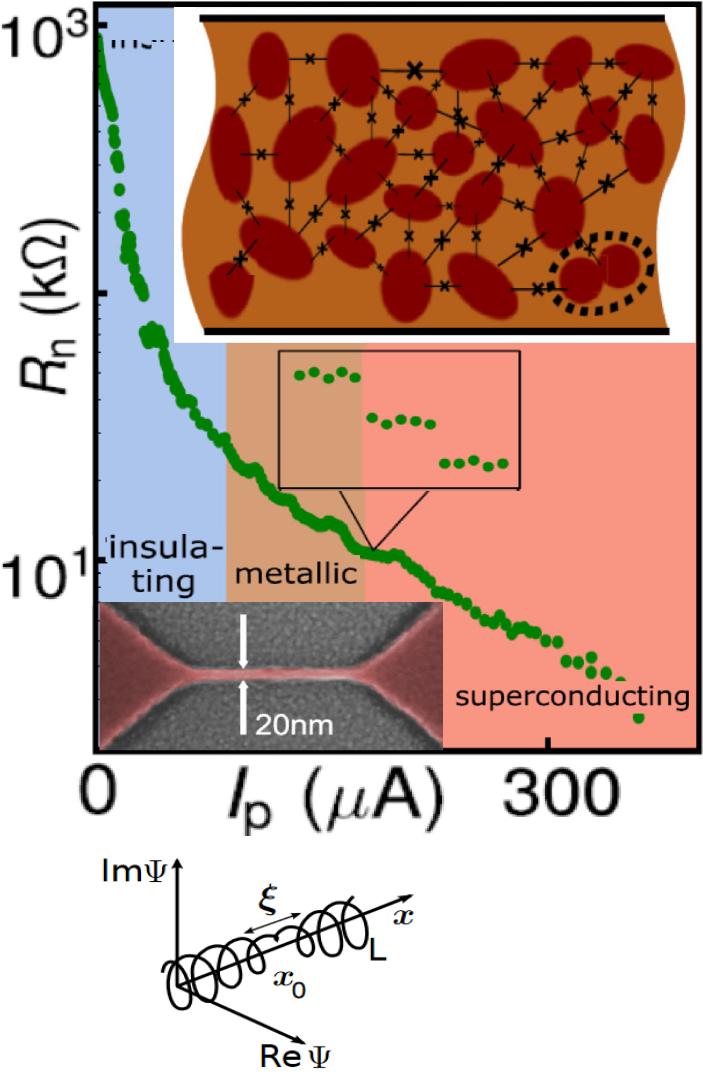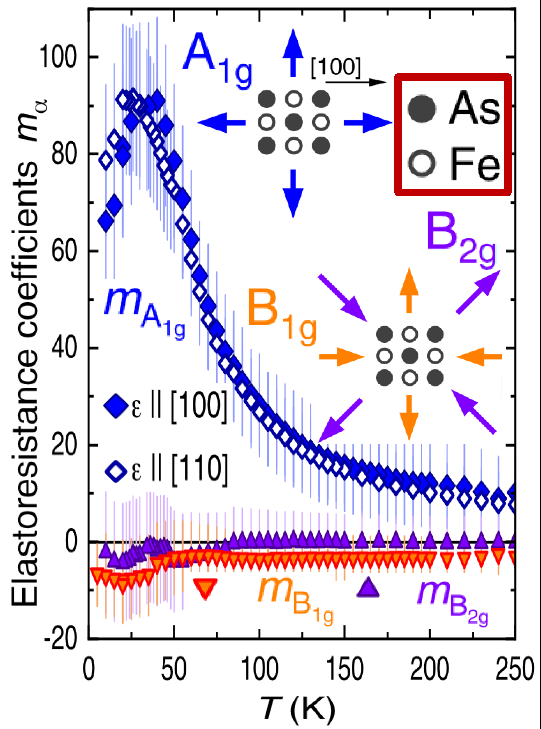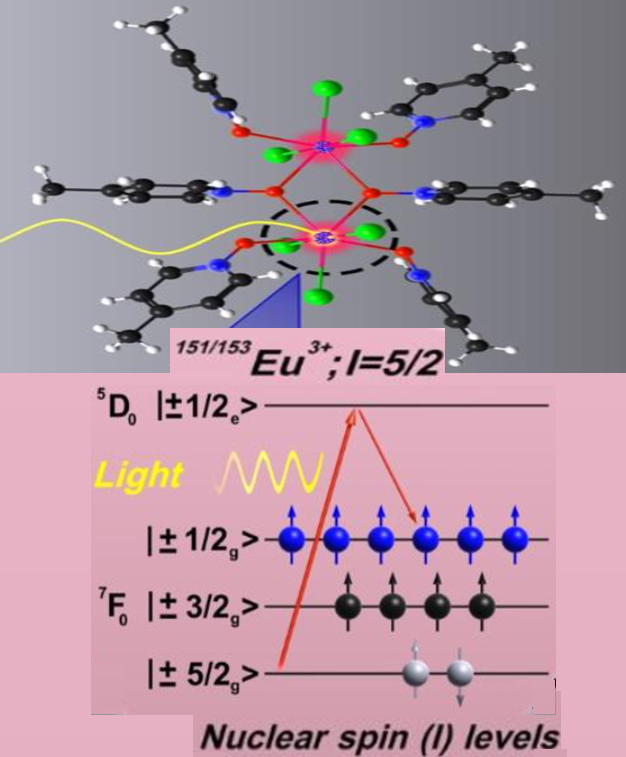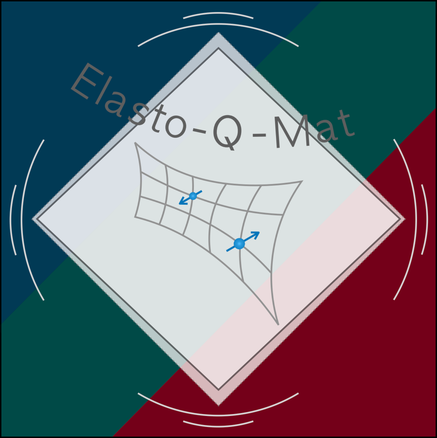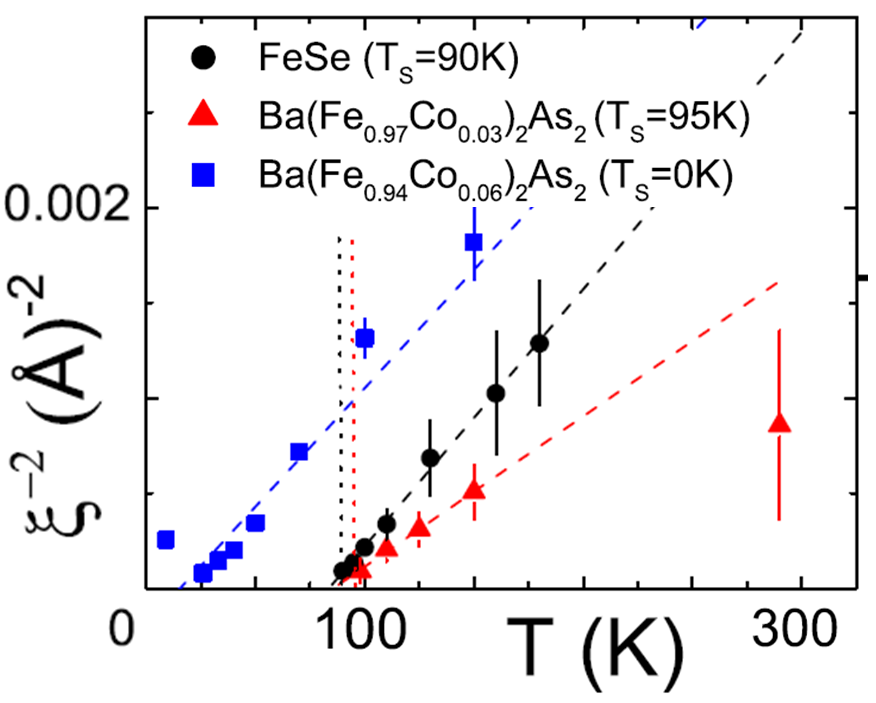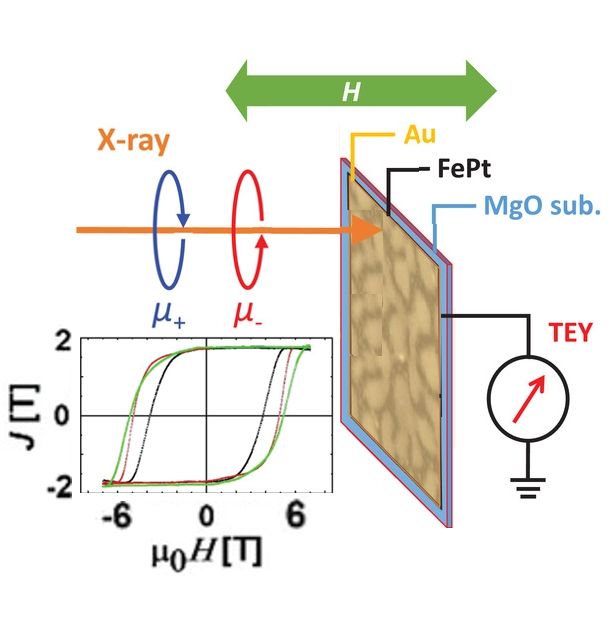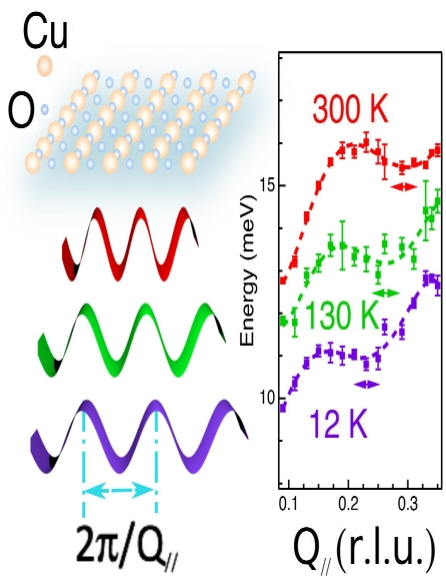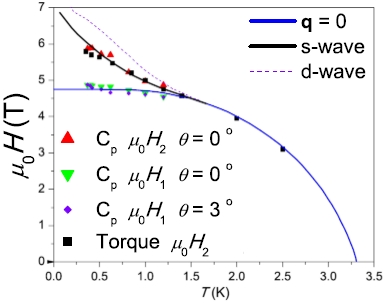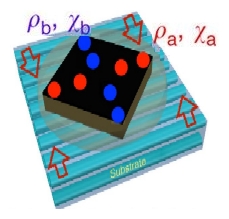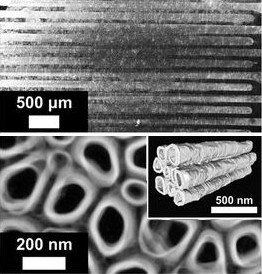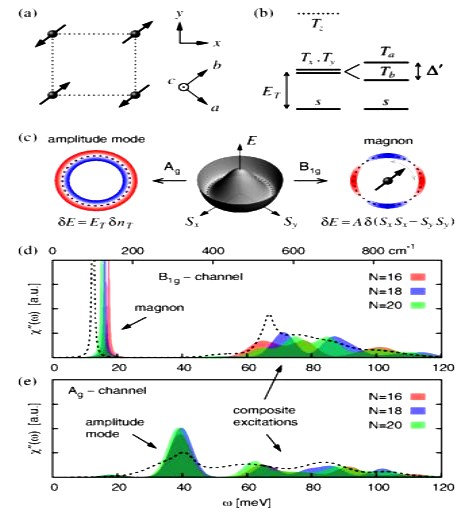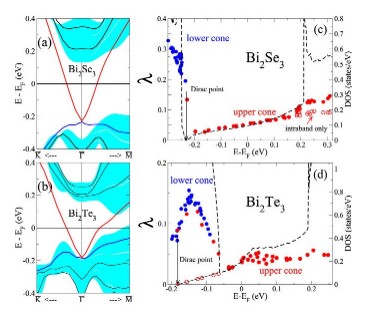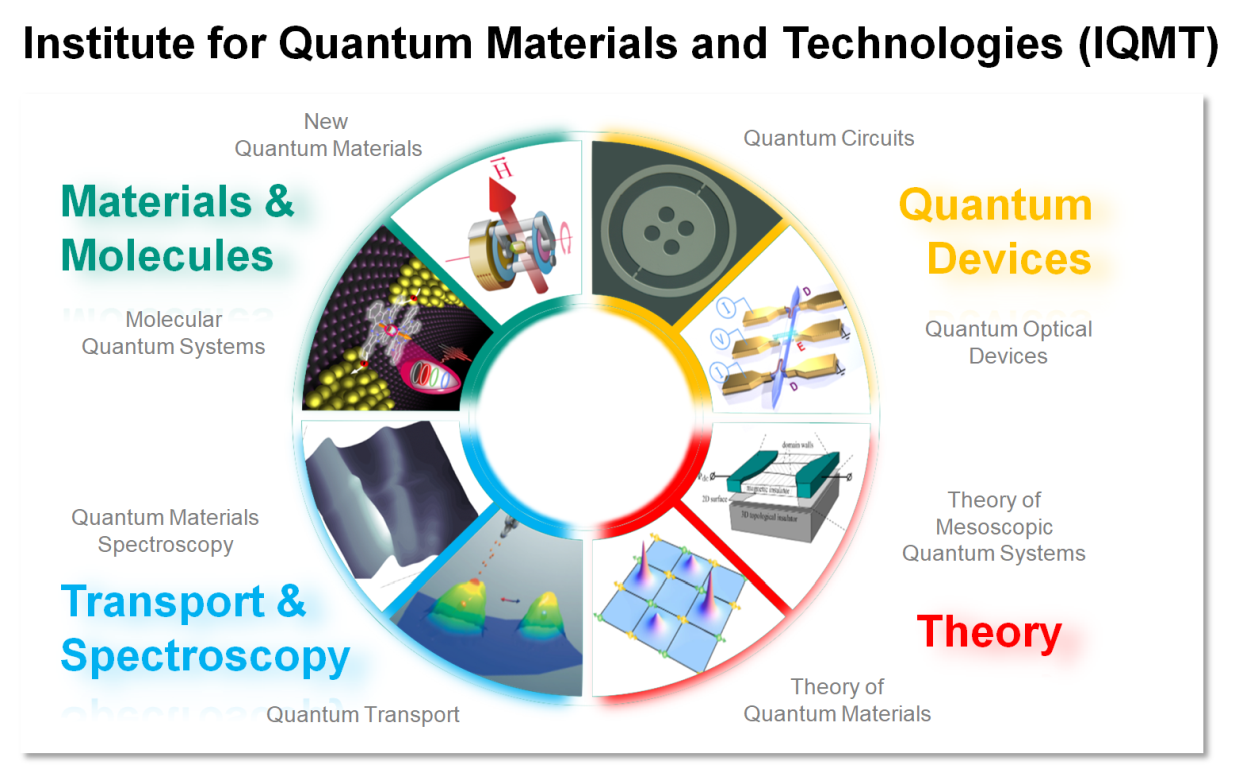
IQMT was established 1.1.2020 as a federation of KIT research groups investigating different aspects of research on quantum materials and technologies. IQMT includes the former Institute for Solid State Physics (IFP) as well as research groups with close relation to the Institute of Nanotechnology (INT), Physikalisches Institut (PHI) and Institute for Theory of Condensed Matter (TKM). This enables a broad spectrum of research on theory and experiments on quantum phenomena in solid state and molecule systems which is reflected in the IQMT divisions
- New Quantum Materials
- Molecular Quantum Materials
- Quantum Materials Spectroscopy
- Quantum Transport
- Quantum Optical Devices
- Quantum Circuits
- Theory of Quantum Materials
- Theory of Mesoscopic Quantum Systems
Technical Support is supplied by a Joint Infrastructure with a Mechanical and an Electrical Workshop operated conjointly by IQMT and INT.
Publication Highlights / News
Chirality in the Kagome Metal CsV3Sb5Using x-ray photoelectron diffraction (XPD) and angle-resolved photoemission spectroscopy, we study photoemission intensity changes related to changes in the geometric and electronic structure in the kagome metal CsV₃Sb₅ upon transition to an unconventional charge density wave (CDW) state. The XPD patterns reveal the presence of a chiral atomic structure in the CDW phase. Furthermore, using circularly polarized x-rays, we have found a pronounced nontrivial circular dichroism in the angular distribution of the valence band photoemission in the CDW phase, indicating a chirality of the electronic structure. This observation is consistent with the proposed orbital loop current order. In view of a negligible spontaneous Kerr signal in recent magneto-optical studies, the results suggest an antiferromagnetic coupling of the orbital magnetic moments along the ? axis. While the inherent structural chirality may also induce circular dichroism, the observed asymmetry values seem to be too large in the case of the weak structural distortions caused by the CDW. Physical Review Letters 134 (2025) 96401 |
Paradigm for Finding d-Electron Heavy Fermions: The Case of Cr-doped CsFe2AsWe define a general strategy for finding new heavy-fermionic materials without rare-earth elements: doping a Hund metal with pronounced orbital-selective correlations towards half-filling. Physical Review Letters 134 (2025) 76504 |
Granular Aluminum Parametric Amplifier for Low-Noise Measurements in Tesla FieldsJosephson junction based parametric amplifiers have become key components in the readout of superconducting qubits, achieving measurement efficiencies close to the quantum limit and enabling single-shot state discrimination. However, their intrinsic susceptibility to magnetic field limits their application for experiments operating above tens of mili Tesla. By leveraging the unique non-linearity of granular aluminum (grAl), researchers in the group of Prof. Ioan Pop at IQMT have fabricated a parametric amplifier with high dynamic range that operates near the quantum limit in magnetic fields up to 1 T. As they report in a recent paper in Phys. Rev. Lett. [Nicolas Zapata et al. Granular Aluminum Parametric Amplifier for Low-Noise Measurements in Tesla Fields, Phys. Rev. Lett. 133, 260604 (2024)], with gain and noise performance on par with state-of-the-art Josephson junction devices, these amplifiers have already proven effective for single-shot detection of a superconducting qubit and are ready for the integration into a wider range of applications requiring high magnetic fields, ranging from the readout of spin and Andreev qubits to molecular magnet detection and dark matter searches. Physical Review Letters 133 (2024) 260604 |
Insights into Homogeneous Bulk Boron Doping at the Tetrahedral Site of NCM811 Cathode Materials: Structure Stabilization by Inductive Effect on TM-O-B BondsRechargeable lithium-ion batteries (LIBs) are critical for enabling sustainable energy storage. The capacity of cathode materials is a major limiting factor in the LIB performance, and doping has emerged as an effective strategy for enhancing the electrochemical properties of nickel-rich layered oxides such as NCM811. In this study, boron is homogeneously incorporated into the tetrahedral site of NCM811 through co-precipitation, leading to an inductive effect on transition metal (TM)-O-B bonds that delayed structural collapse and reduced oxygen release. Consequently, these changes culminate in an enhancement of cycling performance, translating to an initial specific capacity of 210 mAh g−1 and a 95.3% capacity retention after 100 cycles. These interesting findings deepen the understanding of boron doping and shed light on the design of better lithium cathode materials on an applicable scale. Small (2025) 2409743 |
Pressure-Dependent Electronic Superlattice in the Kagome Superconductor CsV3Sb5We present a high-resolution single crystal x-ray diffraction study of kagome superconductor CsV3Sb5, exploring its response to variations in pressure and temperature. We discover that at low temperatures, the structural modulations of the electronic superlattice, commonly associated with charge-density-wave order, undergo a transformation around p ∼ 0.7 GPa from the familiar 2×2 pattern to a long-range-ordered modulation at wave vector q = (0,3/8,1/2). Our observations align with inferred changes in the charge-density-wave pattern from prior transport and nuclear-magnetic-resonance studies, providing new insights into these transitions. Interestingly, the pressure-induced variations in the electronic superlattice correlate with two peaks in the superconducting transition temperature as pressure changes, hinting that fluctuations within the electronic superlattice could be key to stabilizing superconductivity. However, our findings contrast with the minimal pressure dependency anticipated by ab initio calculations of the electronic structure. They also challenge prevailing scenarios based on a Peierls-like nesting mechanism involving Van Hove singularities. Physical Review Letters 133 (2024) 236503 |
Tailoring superstructure units for improved oxygen redox activity in Li-rich layered oxide battery’s positive electrodesThe high-voltage oxygen redox activity of Li-rich layered oxides enables additional capacity beyond conventional transition metal (TM) redox contributions and drives the development of positive electrode active materials in secondary Li-based batteries. However, Li-rich layered oxides often face voltage decay during battery operation. In particular, although Li-rich positive electrode active materials with a high nickel content demonstrate improved voltage stability, they suffer from poor discharge capacity. In the curent work the correlation between oxygen redox activity and superstructure units in Li-rich layered oxides was investigated via physicochemical and electrochemical measurements. Nature Communications 15 (2024) 9981 |
Strange Metal and Superconductor in the Two-Dimensional Yukawa-Sachdev-Ye-Kitaev ModelThe two-dimensional Yukawa-Sachdev-Ye-Kitaev (2D-YSYK) model provides a universal theory of quantum phase transitions in metals in the presence of quenched random spatial fluctuations in the local position of the quantum critical point. It has a Fermi surface coupled to a scalar field by spatially random Yukawa interactions. We present full numerical solutions of a self-consistent disorder averaged analysis of the 2D-YSYK model in both the normal and superconducting states, obtaining electronic spectral functions, frequency-dependent conductivity, and superfluid stiffness. Our results reproduce key aspects of observations in the cuprates as analyzed by Michon et al. [Nat. Commun. 14, 3033 (2023)]. We also find a regime of increasing zero temperature superfluid stiffness with decreasing superconducting critical temperature, as is observed in bulk cuprates. Physical Review Letters 133 (2024) 186502 |
Origin of the chiral charge density wave in transition-metal dichalcogenideChirality refers to a structure that lacks mirror symmetry. It can be observed in a wide range of platforms, from subatomic particles and molecules to living organisms. However, the underlying mechanisms that give rise to chirality in condensed matter systems have been a subject of considerable interest. Here we elucidate the mechanism of chiral charge density wave formation in the transition-metal dichalcogenide 1T-TiSe2 . Based on symmetry analysis, we demonstrate that charge density modulations and ionic displacements follow distinct irreducible representations of the space group, despite exhibiting similar wave vectors and a strong coupling. This charge-lattice symmetry frustration induces lattice distortions that further break all symmetries that are not common to both sectors. This ultimately gives rise to chirality. Our theory is verified using Raman spectroscopy and inelastic X-ray scattering Nature Physics (2024) |
Andreev Qubits Coupled via cQEDIn a recent paper published in Nature Physics [Cheung et al. Photon-mediated long-range coupling of two Andreev pair qubits. Nat. Phys. (2024)], researchers from the University of Basel and KIT demonstrated that by using the tools of circuit Quantum Electrodynamics (cQED), distant Andreev quantum bits (qubits) can be coupled. Andreev qubits are confined within Josephson junctions made of two superconductors connected by a short non-superconducting region. For their computational states, these qubits use Andreev levels, which carry dissipationless supercurrents, to store quantum information. The state of the Andreev qubit controls the current flow through the junction and correspondingly through the larger circuit connected to it, enabling long-distance interactions by coupling other qubits or devices to this current, similar to methods used in cQED with superconducting qubits. This result is the first step in attempting to build quantum processors. The KIT contribution is linked to the cQED setup, and in particular the DJJAA parametric amplifier [Winkel & Takmakov et al. Phys. Rev. Applied 13, 024015 (2020)] used in the experiment. This amplifier, which operates close to the quantum limit of noise, was fabricated at KIT by Carlo Ciaccia, who was a QusTech intern in the group of Prof. Ioan Pop, under the supervision of Dr. Patrick Winkel and Dr. Thomas Reisinger. Nature Physics (2024) |
Collapse of metallicity and high-Tc superconductivity in the high-pressure phase of FeSe0.89S0.11We investigate the high-pressure phase of the iron-based superconductor FeSe0.89S0.11 using transport and tunnel diode oscillator studies using diamond anvil cells. We construct detailed pressure-temperature phase diagrams that indicate that the superconducting critical temperature is strongly enhanced by more than a factor of four towards 40 K above 4 GPa. The resistivity data reveal signatures of a fan-like structure of non-Fermi liquid behaviour which could indicate the existence of a putative quantum critical point buried underneath the superconducting dome around 4.3 GPa. With further increasing the pressure, the zero-field electrical resistivity develops a non-metallic temperature dependence and the superconducting transition broadens significantly. Eventually, the system fails to reach a fully zero-resistance state, and the finite resistance at low temperatures becomes strongly current-dependent. Our results suggest that the high-pressure, high-Tc phase of iron chalcogenides is very fragile and sensitive to uniaxial effects of the pressure medium, cell design and sample thickness. This high-pressure region could be understood assuming a real-space phase separation caused by nearly concomitant electronic and structural instabilities. npj Quantum Materials 9 (2024) 73 |
Anomalous Nernst effect in the noncollinear antiferromagnet Mn5Si3Investigating the off-diagonal components of the conductivity and thermoelectric tensor of materials hosting complex antiferromagnetic structures has become a viable method to reveal the effects of topology and chirality on the electronic transport in these systems. In this respect, Mn5Si3 is an interesting metallic compound that exhibits several antiferromagnetic phases below 100 K with different collinear and noncollinear arrangements of Mn magnetic moments determined from neutron scattering. Previous electronic transport measurements have shown that the transitions between the various phases give rise to large changes of the anomalous Hall effect. Here, we report measurements of the anomalous Nernst effect of Mn5Si3 single crystals that also show clear transitions between the different magnetic phases. In the noncollinear phase, we observe an unusual sign change of the zero-field Nernst signal with a concomitant decrease of the Hall signal and a gradual reduction of the remanent magnetization. Furthermore, a symmetry analysis of the proposed magnetic structures shows that both effects should actually vanish. These results indicate a symmetry-breaking modification of the magnetic state with a rearrangement of the magnetic moments at low temperatures, thus questioning the previously reported models for the noncollinear magnetic structure obtained from neutron scattering. Communications Materials 5 (2024) 176 |
Observation of the sliding phason mode of the incommensurate magnetic texture in Fe/Ir(111)The nanoscopic magnetic texture forming in a monolayer of iron on the (111) surface of iridium, Fe/Ir(111), is spatially modulated and uniaxially incommensurate with respect to the crystallographic periodicities: Iron forms a two-dimensional hexagonal lattice on Ir(111) with a lattice constant a = 2.715 Å, whereas the magnetic texture is an approximate square lattice with lattice constant A ≈ 1 nm. A a phason mode, a low-energy magnetic excitation corresponding to the sliding of the texture along the incommensurate direction, is expected. This has been now confirmed with atomistic spin simulations based on a 3 × 5 commensurate approximation of the magnetic unit cell and it was observed experimentally using scanning tunneling microscopy (STM). |
Quantum Oscillations Study of Tetragonal FeSe0.82S0.18 under PressureAt ambient pressure, the Fermi surface of tetragonal FeSe0.82S0.18 contains two electron and two hole pockets. A quantum oscillations study up to 45 T under pressure up to 22 kbar revealed now that the quasi-two-dimensional Fermi surfaces expand and the effective masses remain large, whereas the critical temperature for the onset of superconductivity Tc displays a threefold enhancement. npj Quantum Materials 9 (2024) 52 |
Flexible strained membranes of multiferroic TbMnO3The multiferroic properties of TbMnO3 demonstrate high versatility under applied pressure, making the material potentially suitable for use in flexible electronics. Here, we report on the preparation of elastic freestanding TbMnO3 membranes. Strain in flexible membranes was tuned by using a commercial strain cell device and characterized by Raman spectroscopy. The B1g out-of-phase oxygen-stretching mode, representative for the Mn-O bond distance, systematically shifts to lower energy with increasing strain. The flexibility and elastic properties of the membranes allow for specific manipulation of the multiferroic state by strain. Applied Physics Letters 125 (2024) 11901 |
Annealing-Tunable Charge Density Wave in the Magnetic Kagome Material FeGeIn the magnetic kagome material FeGe, a charge density wave (CDW) forms within the antiferromagnetic phase (AFM),
which indicates an unusual CDW mechanism in combination with magnetism.
Both the CDW and magnetism of FeGe can be precisely tuned by post-annealing, where the CDW and AFM transition temperatures are inversely correlated.
|
Giant Two-Level Systems in a Granular SuperconductorDisordered thin films are a common choice of material for superconducting, high impedance circuits used in quantum information or particle detector physics. Quantum circuits are prone to interact with two-level systems (TLS), typically originating from solid state defects in the dielectric parts of the circuit, like surface oxides or tunneling barriers. Via their electric dipole moment, such TLS can couple to the ac fields of quantum circuits, causing energy relaxation and dephasing. An experimental investigation of TLS in granular aluminum thin films under applied mechanical strain and electric fields revealed now a class of strongly coupled TLS having electric dipole moments up to 30 eÅ, an order of magnitude larger than dipole moments commonly reported for solid state defects. Notably, these large dipole moments appear more often in films with a higher resistivity. Physical Review Letters 132 (2024) 217002 |
Understanding the Electrochemical Reaction Mechanism of the Cathode Material Na2/3Mn7/12Fe1/3Ti1/12O2 for Sodium-Ion BatteriesNa ion batteries (SIBs) are a low-cost alternative to Li ion batteries (LIBs) in large-scale electric energy storage applications
due to the natural-abundant Na resources and similar working principles to LIBs during cycling.
Iron- and manganese-based layered electrodes have attracted here renewed interest due to their low cost and environmental friendliness.
However, phase changes at high voltage and the Jahn–Teller effect lead to a short cycle life and poor rate capability. Partial substitution of Fe by Mn and Ti helps to suppress a detrimental structural phase transition. The similar ionic radii and the same valence of Mn4+ and Ti4+ ensure a homogeneous incorporation of Ti4+.
|
Colossal c-axis response and lack of rotational symmetry breaking within the Kagome planes of the CsV3Sb5 superconductorThe kagome materials AV3Sb5 (A = K, Rb, Cs) host an intriguing interplay between unconventional superconductivity and charge-density wave (CDW) states. Bulk thermodynamic measurements (high-resolution thermal expansion, heat capacity, elastoresistance) on CsV3Sb5 single crystals reveal that this competition is dramatically influenced by tuning the crystallographic c axis. In contrast to previous reports no additional bulk phase transitions has been found within the CDW state which had been associated with rotational symmetry breaking within the kagome plane. The CDW phase exhibits an enhanced A1g-symmetric elastoresistance coefficient, whose large increase at low temperature is driven by electronic degrees of freedom. Physical Review Letters 132 (2024) 186001 |
Battery research with synchrotron radiationWith the new measuring instrument NAPXAS (Near Ambient Pressure X-ray Absorption Spectroscopy), which was set up at IQMT's soft X-ray analytics facility WERA at the KIT Light Source of the Karlsruhe Research Accelerator (KARA), energy conversion and ageing processes in battery energy storage systems can be investigated spectroscopically under quasi-normal wet chemical conditions during battery operation. NAPXAS will initially be used in a research project at the University of Münster to overcome limitations in Li-ion batteries. KIT-Presseinformation 39 (2024) |
Interplay between 2D and 3D charge density waves in underdoped high-temperature superconducting YBa2Cu3OyIn underdoped YBa2Cu3Oy uniaxial compression results in an enhancement of
the amplitude and correlation lengths of an incommensurate, short-range, 2D-correlated charge density wave ("2D CDW"). Beyond a threshold stress value, a long-range-ordered, 3D correlated CDW ("3D CDW") emerges and the 2D CDW amplitude stops growing.
The 2D CDW is biaxial, with components that propagate along both the a and b axes, however with substantially different dependencies of amplitude and correlation lengths on uniaxial stress.
Analysis of the in-plane correlation lengths revealed that the 2D CDW consists of quasi-independent unidirectional orders.
The 3D CDW is uniaxial, propagating along the b axis only. The in-plane wavelengths of the 2D and 3D CDWs are identical.
|
Observation of Josephson harmonics in tunnel junctionsThe standard model of Josephson tunnel junctions is based on a purely sinusoidal current–phase relation. However, this applies only in the limit of vanishingly low-transparency channels in the tunnel barrier. For AlOx Josephson tunnel junctions, as used in state-of-the-art Qubit transmon circuits, a realistic model of tunnelling through the inhomogeneous AlOx barrier predicts percent-level contributions from higher Josephson harmonics. Since the current–phase relation determines directly the potential energy of transmon cicuits the extent of these contributions can be extracted from the experimental energy spectra of the circuits. Samples from various laboratories showed different levels of higher Josephson harmonics admixtures. Surprisingly, the large Josephson harmonics found in IBM qubits apparently decrease their charge noise decoherence which indicates a possible optimization route for superconducting Qubit circuits by proper engineering of the Josephson harmonics. Nature Physics (2024) |
Full phonon softening above the CDW phase transition in 2H-TaSe2Inelastic x-ray scattering (IXS) studies with meV resolution on the Charge Density Wave (CDW) transition in 2H-TaSe2 enabled an unambiguous separation between the static superlattice peak and in- or quasi-elastic scattering from the soft phonon mode. Full phonon softening of a longitudinal acoustic phonon mode at qCDW = (0.323,0,0) occurs already at a temperature T* = 128.7 K while the static CDW superlattice peak intensity still rises strongly only on cooling down to TCDW = 121.3 K. Analysis of high momentum resolution scans at E = 0 reveals that the phase at TCDW ≤ T ≤ T* is characterized by lattice fluctuations, observed as the overdamped soft phonon mode, coexisting with static but only medium-range-sized CDW domains, which form a long-range ordered state only for T ≤ TCDW. Nature Communications 14 (2023) 7282 |
Nano-assembled open quantum dot nanotube devicesUntil now the realisation of complex carbon nanotube (CNT) based quantum circuits via mechanical integration of the nanotubes into a circuit was limited to the closed quantum dot regime due to the Coulomb blockade generated by highly resistive CNT-metal interfaces. A novel preparation technique enables sufficiently transparent interfaces to reach the open quantum dot regime as could be demonstrated by measurements of Fabry-Perot interferences and Kondo physics. The nanotubes can be inserted into a circuit with an alignment precision of ± 200 nm. The technique enables the realization of carbon nanotube superconducting qubits or flux-mediated optomechanics. Communications Materials 5 (2024) 5 |
EU Project on Quantum-Limited Microwave AmplifiersThe EU-funded and KIT-coordinated project "TruePA" aims at the further development of a "Truly Resilient Quantum Limited Traveling Wave Parametric Amplifier", an amplifier device for weak microwave signals which could be a key component for quantum cryptography, communication, or computing. The project goal is to design novel superconducting circuits and to characterize them by new methods based on quantum optical techniques. The project is funded by EU with three million Euro over a period of three years. KIT-News 2023 (0) |
Hot luminescence from single-molecule chromophores electrically and mechanically self-decoupled by tripodal scaffoldsElectrical contact to individual molecules is a key ingredient for molecular optoelectronics. Experiments to mount individual chromophores on extended tripodal scaffolds in order to enable both efficient electrical and mechanical decoupling of individual chromophores from metallic leads have achieved now a significant improvement: In a first attempt with a smaller tripodal platform, the physisorption of the mounted chromophore was favored over the chemisorption of the foot structure, resulting in a flat arrangement of the chromophore on the surface. The modification of the tripodal scaffold molecule by enlarging the π-systems of the three footing substituents resulted now in an increase of their chemisorption on the metal substrate, in a stabilisation of the entire foot structure and finally in a stable upright arrangement of the attached chromophore. This enabled to observe the spectrally and spatially resolved electroluminescence of individual self-decoupled chromophores. Hot luminescence bands were even visible in single self-decoupled chromophores, documenting the mechanical decoupling between the vibrons of the chromophore and the substrate. Nature Communications 14 (2023) 8253 |
Amir-Abbas Haghighirad is again in 2023 "Highly Cited Researcher"Just as in the three previous years, Amir-Abbas Haghighirad belongs, together with four other KIT scientists, again in 2023 to the "Highly Cited Researchers" , a ranking list which comprises the names of the scientists with the highest number of citations of their publications between January 2012 and December 2022. A publication is only acknowledged as "Highly Cited" if it belongs to the top 1 % of the total citations of the respective research area and publication year. KIT-News (2023) |
Giant lattice softening in Sr2RuO4 due to electronic Lifshitz transitionThe stress-strain relationship of the quasi–2D correlated metal Sr2RuO4 was studied as it was tuned through a saddle point Lifshitz transition in which the Fermi surface topology changes and the Fermi level crosses a Van Hove singularity. By combining direct stress-strain measurements with experimentally determined entropy data across the same transition, the existence of an unexpectedly large softening of the lattice driven entirely by conduction electrons could be demonstrated. Science 382 (2023) 447 |
ERC Synergy Grant for Axion Detector based on Superconducting QubitsThe 6-year international project "Quantum Technologies for Axion Dark Matter Search" ("DarkQuantum" for short) has been awarded an ERC Synergy Grant worth €12.9 million, of which around €2 million will go to KIT, to build a detector system that will be used to experimentally detect axions, previously hypothetical elementary particles that are considered promising candidates for dark matter. Superconducting qubits serve here as extremely low-noise detectors ("axion haloscopes") for the specific electromagnetic radiation generated by the interaction of axions with strong magnetic fields. KIT-Presseinformation 87 (2023) |
Improved primary high pressure scale challenges current understanding of Earth's core physicsShock compression measurement of metals has been used up to now as standard method to establish an accurate pressure scale at very high pressures. However, such experiments provide nonisothermal Hugoniot curves which have to be converted to an isothermal scale by means of extrapolation and approximations. By combined measurement of the acoustic velocities and the density from a rhenium sample in a diamond anvil cell using inelastic x-ray scattering and x-ray diffraction a primary pressure scale could now be established which extends to the multimegabar pressures of Earth’s core and reveals that previous scales have overestimated laboratory pressures by at least 20% at 230 GPa. As a direct consequence the present picture of the physics of Earth’s core has to be revised since it is based on erroneous density values of Fe at such high pressures. Science Advances 9 (2023) 8706 |
Band-resolved Caroli–de Gennes–Matricon states of multiple-flux-quanta vortices in a multiband superconductorThe two-band superconductivity of Pb allows for single-flux-quantum and multiple-flux-quanta vortices in the intermediate state at millikelvin temperature. Using scanning tunneling microscopy, the winding number of individual vortices could be determined from the real space wave function of its Caroli–de Gennes–Matricon bound states. Science Advances 9 (2023) 9163 |
Giant Non-Volatile Electric Field Control of Proximity Induced Magnetism in SrIrO3In SrIrO3 heterostructures a non-volatile electrical control of proximity induced magnetism has been demonstrated. A giant variation of the anomalous Hall conductivity and Hall angle as function of the applied gate voltage Vg by up to 700% was achieved. The Curie temperature TC and the magnetic anisotropy of the system remained essentially unaffected hinting to gating-induced changes of the anomalous Berry curvature. Advanced Functional Materials (2023) 2308346 |
Dresden Physics Prize 2023 for Jörg SchmalianJörg Schmalian receives the Dresden Physics Prize of the Year 2023 in recognition of his research in the field of condensed matter theory and in recognition of his contributions to promoting close cooperation between the Max Planck Institute for the Physics of Complex Systems (MPI-PKS) and the TU Dresden. Physik-Preis Dresden (2023) |
High-Purity Entanglement Using NonreciprocityDistributed quantum information processing and communication protocols demand the ability to generate
entanglement among propagating modes. However, thermal fluctuations can severely limit the
fidelity and purity of propagating entangled states, especially for radio-frequency (rf) signals.
|
Co-substituted Magnetic Metal Halide Perovskite The promise of low-cost and efficient optoelectronic devices has been the central driving force behind the recent development of metal halide perovskite materials.
Single-junction photovoltaic devices reaching 25.7% certified power conversion efficiencies and light-emitting diodes with external quantum efficiencies exceeding 20% have been demonstrated. |
Fe(II) Spin Crossover molecules on magnetic Co/Au(111)Spin crossover (SCO) is a phenomenon that occurs in some metal complexes wherein the spin state of the complex changes due to an external stimulus. The change in spin state usually involves interchange of low spin (LS) and high spin (HS) configuration. The sensitivity of this reaction on changes of the environment makes them ideal candidates for molecular spintronics. In particular, the composite of SCO complexes and ferromagnetic (FM) surfaces would allow spin-state switching of the molecules in combination with the magnetic exchange interaction to the magnetic substrate. Unfortunately, when depositing SCO complexes on ferromagnetic surfaces, up to now spin-state switching has always been observed to be blocked by the relatively strong interaction between the adsorbed molecules and the surface. In a novel experimental realization it could be demonstrated for a sub-monolayer of Fe(II) SCO complex molecules deposited on Au passivated Co films on Au(111) that the SCO complexes in the HS state interact ferromagnetically with the ferromagnetic Co film and stilll maintain their SCO ability. These observations provide a feasible design strategy in fabricating SCO-FM hybrid devices. Small (2023) 2300251 |
Monitoring the Formation of Li-Battery Cathode MaterialsLayered transition-metal oxides (LiMeO2) such as LiNixCoyMn1−x−yO2 (0 ≤ x, y ≤ 1.0 ; “NCM”) are promising cathode materials in lithium-ion batteries due to their high
specific capacities (up to 0.22 Ah/g). Me/Li disorder due to the similar radii of Ni2+(0.69 Å) and Li+ (0.76 Å)
is considered one of the main factors contributing to the
rapid capacity and voltage fade, poor thermal stability, and
irreversible reactions on the surface.
|
STM activation of the electroluminescence of individual molecules on a Au substrateElectroluminescence from single molecules adsorbed on a conducting surface imposes conflicting demands for the molecule-electrode coupling. To conduct electrons, the molecular orbitals need to be hybridized with the electrodes. To emit light, they need to be decoupled from the electrodes to prevent fluorescence quenching. This is typically achieved by inserting a thin insulating layer of NaCl. A promising alternative is the functionalization of the light-emitting chromophore with a suitable spacer group. 2,6-core-substituted naphthalene diimide was investigated as a promissing candidate material since the molecule consists of a chromophore linked via an alkyne spacer with a triphenylmethane platform with three acetyl-protected thiol anchors which provide a good connection to a Au(111) substrate. The molecular complexes were designed to stand upright on the tripodal anchor, decoupling the chromophore from the substrate. However, due to dimensional mismatch of the molecular subunits the van der Waals interaction between the large molecule and the substrate overcomes the binding energy of the thiol groups of the feet and the chromophore becomes attached in a flat adsorption configuration to the metal substrate, This leads to a quench of the electroluminescence of the molecules. In the now reported STM experiments individual molecules could be driven from this strongly hybridized state with quenched luminescence to a light-emitting state. The emission performance compares in terms of quantum efficiency (10-5–10-4 photons per electron), stability, and reproducibility to that of single molecules deposited on thin insulating layers. Quantum chemical calculations suggest that the emitted light originates from the singly charged cationic pair of the molecules. Physical Review Letters 130 (2023) 36201 |
Soft-Phonon and Charge-Density-Wave Formation in BaNi2As2The incommensurate charge density-wave (I-CDW) in BaNi2As2 has been investigated by x-ray scattering. Diffuse scattering signals corresponding to the ordering wave vectors qI-CDW (0.28 0 0) and (0 0.28 0) (in reciprocal lattice units of the tetragonal crystal structure with xy-orientation of the Ba and NiAs layers) can be observed already at room temperature and indicate the formation of I-CDWs with very short in-plane ξk ∼ 10 Å and out-of-plane ξl ∼ 4 Å correlation lengths
which increase towards lower temperature. The divergence of ξl at TI-CDW = 146 K coincides with a small orthorhombic lattice distortion. Upon further cooling, the I-CDW superstructure reflections persist down to Ttri = 135 K where BaNi2As2 undergoes a
first-order phase transition into a triclinic structure
where the bonding of Ni ions to the surrounding 4 As ions
is no longer tetrahedrally symmetric and
the arrangement of the Ni ions apparently distorts to the formation
of Ni–Ni dimers arranged in zigzag chains. The I-CDW is replaced here by a commensurate modulation (C-CDW) with an ordering vector qC-CDW (1/3 0 1/3).
|
Granular aluminium nanojunction fluxonium qubitNanoscopic Josephson junctions created by a single-layer deposition of a 20 nm thin film of granular aluminium and lithographical definition of 20 nm wide nanobridges were demonstrated to be operable in simple qubit circuit at coherence times in the microsecond range, just like Al–AlOx–Al superconductor–insulator–superconductor (SIS) that are the present state-of-the-art Josephson junctions for qubit circuits. The single-layer deposition allows to reduce the footprint well below 100 x 100 nm2, the present technological limit of these conventional SIS junctions due to the involved multilayer and often multi-angle evaporation processes. This smaller size transfers directly into a larger magnetic field tolerance which makes them much more resilient against parasitic stray fields in more complex circuits. As a further advantage, the lack of a mesoscopic parallel plate capacitor gives rise to an intrinsically larger charging energy in the range of tens of gigahertz, comparable to its Josephson energy. This may enable a new Josephson circuit functionality. Due to the unprecedented accuracy in measuring the Josephson energy, spontaneous jumps could be observed here on timescales from milliseconds to days, which offers a powerful diagnostics tool for microscopic defects in superconducting materials. Nature Materials (2022) |
Localization of electrons in the nematic phaseMagnetotransport studies of thin flakes of FeSe performed by a collaboration of University of Oxford, University of Bath and KIT-IQMT at the High Field Magnet Laboratory in Nijmegen revealed an unconventional transport behaviour in the nematic electronic phase as a function of the sample thickness. Based on a two-band model an unusual asymmetry between the mobilities of the electrons and holes was found. Quantum oscillations in magnetic fields up to 38 T indicate the presence of a hole-like quasiparticle with a lighter effective mass and a quantum scattering time three times shorter, as compared with bulk FeSe. The observed localization of negative charge carriers by reducing dimensionality is suggested to be driven by orbitally dependent correlation effects, enhanced interband spin fluctuations, or a Lifshitz-like transition, which affect mainly the electron bands. PNAS 119 (2022) 2200405 |
Electronic nematic liquid in BaNi2As2In Raman spectroscopy of
BaNi2As2 an exceptionally large energy splitting of the doubly degenerate planar vibrations of the NiAs tetraedra was observed.
In sharp contrast to the behavior in the corresponding iron-based systems, where this splitting was taken as evidence for nematic symmetry breaking, in
BaNi2As2 it occurs at temperatures well above any reported structural phase transition temperature. This calls for a distinction between the lifting of a degeneracy and a dynamical spectral splitting. The splitting can be accounted for by a particularly strong coupling of electronic nematic fluctuations, likely of orbital nature, to the lattice degrees of freedom in this material and indicates that the tetragonal phase of BaNi2As2 hosts an electronic nematic phase, dynamical
in nature. |
Electroluminescence from Single-Walled Carbon Nanotubes with Quantum DefectsIndividual single-walled carbon nanotubes with covalent sidewall defects have emerged as a class of photon sources whose photoluminescence spectra can be tailored by the carbon nanotube chirality and the attached functional group/molecule. Single-tube devices based on (7, 5) carbon nanotubes, functionalized with dichlorobenzene molecules, and wired to graphene electrodes were fabricated and investigated in electroluminescence spectroscopy. The devices showed electrically generated, defect-induced emissions that are controllable by electrostatic gating and strongly red-shifted compared to emissions from pristine nanotubes. The defect-induced emissions are assigned to excitonic and trionic recombination processes by correlating electroluminescence excitation maps with electrical transport and photoluminescence data. At cryogenic conditions, additional gate-dependent emission lines appear, which are assigned to phonon-assisted hot-exciton electroluminescence from quasi-levels. It was shown that electroluminescence excitation is selective toward neutral defect-state configurations with the lowest transition energy, which in combination with gate-control over neutral versus charged defect-state emission leads to high spectral purity. ACS Nano (2022) |
Elastocaloric Determination of the Phase Diagram of Sr2RuO4A piezoelectric-based device was used for a high-precision measurement of the elastocaloric response function of Sr2RuO4 which reflects under adiabatic conditions the
differential change of entropy. Hence, zeroes of this response function correspond to extrema of entropy.
|
Fluxons in High-Impedance Long Josephson JunctionsFluxons, supercurrent vortices, in long Josephson junctions can be accelerated by a bias current up to the Swihart velocity, the characteristic velocity of electromagnetic waves in the junction. This effect can be used for current amplification in superconducting electronics. Reaching the end of the junction, the fluxons are reflected and transformed into anti-fluxons, supercurrent vortices with reversed rotation, which are then accelerated in the reverse direction. This mechanism can be used for an application as tunable oscillator where the oscillation frequency is given by the length of the junction and the current-adjustable average velocity of the (anti-)fluxons. However, since the impedance of conventional long Josephson junctions is much too low for a direct connection to external circuits and 50 Ohm cables, such devices could supply up to now only very small microwave output power. A KIT research group demonstrated now that thin films of a high kinetic inductance superconductor, granular aluminum, as superconducting electrodes can provide a solution of this problem by increasing the characteristic impedance by an order of magnitude due to the increase of inductance by means of the additional kinetic inductance. The amount of magnetic flux carried by each supercurrent vortex is significantly smaller than the magnetic flux quantum Φ0. The Swihart velocity is reduced by about one order of magnitude compared to conventional long Josephson junctions. Applied Physical Letters 120 (2022) 112601 |
Molecular Crystals for Quantum Information DevicesRare-earth (RE) ions can show narrow optical and spin homogeneous linewidths, or, equivalently, long-lived quantum states.
This enables the use of RE ions for photonic quantum technologies such as memories for light, optical–microwave transduction and computing.
However, so far, few crystalline materials have shown an environment quiet enough to fully exploit these properties.
Molecular systems can provide such capability but generally lack spin states or have spin states featuring only broad optical lines.
|
Topological Magnon Band Structure in a Skyrmion LatticeThe motion of a spin excitation across topologically nontrivial magnetic order exhibits a deflection that is analogous to the effect of the Lorentz force on an electrically charged particle in an orbital magnetic field. Polarized inelastic neutron scattering was used to investigate the propagation of magnons (i.e., bosonic collective spin excitations) in a lattice of skyrmion tubes in MnSi. For wave vectors perpendicular to the skyrmion tubes, the magnon spectra are consistent with the formation of finely spaced emergent Landau levels that are characteristic of the fictitious magnetic field used to account for the nontrivial topological winding of the skyrmion lattice. This provides evidence of a topological magnon band structure in reciprocal space, which is borne out of the nontrivial real-space topology of a magnetic order. Science 375 (2022) 1025 |
Proximity-induced Ferromagnetism in SrIrO3A ferromagnetic state - rarely observed in 5d-based transition metal oxides due to the generally weak electron-electron correlation - is induced in SrIrO3 by proximity to ferromagnetic insulating LaCoO3. Electrical transport allows to selectively probe ferromagnetism of SrIrO3. It reveals a strong magnetocrystalline anisotropy and enables the direct observation of a strong, intrinsic and positive anomalous Hall effect. Advanced Materials 34 (2022) |
John Bardeen Prize 2022 for Jörg SchmalianThe
2022 John Bardeen Prize
was awarded to Jörg Schmalian (KIT), Mohit Randeria (The Ohio State University), and Peter Hirschfeld (University of Florida) for pioneering theoretical work that has provided significant insights on the nature of superconductivity, its realization in strongly correlated systems, and experimental probes of unconventional superconductors.
|
Momentum Dependence of Electron-Phonon CouplingIt was shown that strong renormalization of the life time of lattice vibrations, i.e. phonons, can occur in the absence of both Fermi surface nesting and lattice anharmonicity, if electron-phonon coupling is strongly enhanced for specific values of electron-momentum. Using inelastic neutron scattering, soft x-ray angle-resolved photoemission spectroscopy measurements and ab-initio lattice dynamical and electronic band structure calculations this scenario has been verified in the highly anisotropic tetragonal electron-phonon superconductor YNi2B2. This new scenario is likely to apply to a wide range of compounds. Nature Communications 13 (2022) 228 |
Spin-Readout of Single-Molecule Magnet with STMRare-earth based single-molecule magnets are promising candidates for magnetic information storage including qubits as their large magnetic moments are carried by localized 4f electrons. This shielding from the environment in turn hampers a direct electronic access to the magnetic moment. In a collaboration of KIT, RWTH Aachen, Universidad de Panama and CESQ Strasbourg indirect readout of the Dy moment in Bis(phthalocyaninato)dysprosium (DyPc2) molecules on Au(111) has now been demonstrated using milli-Kelvin scanning tunneling microscopy. An unpaired electron on the Pc ligand leads to a Kondo resonance that is, however, energetically split by the ferromagnetic exchange interaction between the unpaired electron and the Dy magnetic momentum. Using spin-polarized scanning tunneling spectroscopy, the Dy magnetic moment could be determined measuring this exchange-splitting of the Kondo state ed as a function of the applied magnetic field. Physical Review Letters 127 (2021) 123201 |
Effect of natural radioactivity on superconducting qubitsA collaboration with leading participation of Karlsruher Institute of Technology (KIT) and Istituto Nazionale di Fisica Nucleare (INFN) investgated the effect of natural radioactivity on the operation of superconducting qubit circuits. Impacting high-energy particles break Cooper pairs into quasi-particles and generate hereby over the whole chip area temporaly and spatially correlated bursts of such energetic excitations which are able to destabilize not only the qubits but also the qubit error correction circuits by means of the coherence of the disturbance over large circuit areas. Under regular conditions such a quasi-particle burst was observed to occur on the average every 10 seconds. Operation in the deep-underground Laboratori Nazionali del Gran Sasso in a lead-shielded cryostat decreased the quasi-particle burst rate by a factor 30 and lowered the internal dissipation in the superconducting circuits by factors two to four: This demonstrates the critical relevance of this non-thermal quasi-particle generation at the qubit operation temperature ∼ 0.1 K where thermal quasi-particles are completely suppressed. Nature Communications 12 (2021) 2733 |
Electromigration and Quantum Phase Slip in Al nanowiresAluminum is at present the favorite material for superconducting QuBit circuits. On nm-scale miniaturisation of device structures the granularity of the microstructure becomes evident: At low temperature, the connections between the superconducting nm-sized Al grains act as Josephson junction network and dominate their electrical behavior. A collaboration of IQMT, PI(KIT), MISIS University Moskau and RMIT University Melbourne developed now a method to reduce the normalconducting resistance RN of Al nanowires by up to 3 orders of magnitude and to select hereby insulating, metallic or superconducting behavior. The internal electromigration ("IEM") is based on a successive rise of the magnitude of current pulses. This apparently eliminates successively the most resistive connections in the Josephson network and reduces the total resistance systematically as a function of the current pulse intensity in a sequence of ever smaller resistance reduction steps. The RN-variability enabled an experimental validation of the theoretically predicted Quantum Phase Slip ("QPS") behavior of superconducting nanowires. The duality of charge and quantummechanical phase opens up a new perspective for the construction of novel QPS-Quantum Electronics in perfect analogy to Josephson contact based circuits. ACS Nano 15 (2021) 4108 |
Disproof of divergent nematic susceptibility in CsFe2As2CsFe2As2 features with a huge Sommerfeld coefficient of 180 mJ/(mol K2) the largest electronic specific heat contribution of all known Fe-based superconductors, a value which compares to that of heavy-fermion compounds and demonstrates the strong electronic correlations. In a recent measurement of the elastoresistance, the strain dependence of the electrical resistivity, thermal expansion could be neutralized by means of a piezoelectric-based strain cell. The clear observation of a large in-plane symmetric response and substantially weaker response in the symmetry-breaking channels disproves previous reports of divergent nematic susceptibility. The result can be naturally interpreted in terms of a low-temperature heavy Fermi-liquid regime and a reduction of the coherence of the heavy quasiparticles towards higher temperature due the orbital-selective Mott physics which is sensitively tuned by the in-plane atomic distances. Physical Review Letters 125 (2020) 187001 |
All-optical polarization of the ground-state nuclear spins of Eu-IonsA collaboration of CNRS-Université de Strasbourg, KIT and Université PSL (Paris Sciences & Lettres) succeeded in a further step towards the realization of a molecule-based coherent light-spin Quantum Information Processing (QIP) interface: At 1.4 K, long-lived spectral holes have been burnt in the absorption spectrum of a binuclear Eu(III) complex. This demonstrates an efficient polarization of the ground-state nuclear spins of the rare-earth ions, quantified in terms of an optical coherence lifetime T2opt=14.5±0.7 ns, and a ground-state spin population lifetime T1spin=1.6±0.4 s, which is a requirement for all-optical spin initialization and addressing. Nature Communications 12 (2021) 2152 |
ELASTO-Q-MAT initiative funded by DFGA new Transregional Collaborative Research Center (SFB-TRR) ELASTO-Q-MAT in close cooperation between the Karlsruhe Institute of Technology (KIT), the Goethe University Frankfurt, the Johannes Gutenberg University Mainz, the Max Planck Institute of Polymer Research in Mainz, and the Max Planck Institute for Chemical Physics of Solids in Dresden will investigate quantum materials whose properties can be dramatically changed through elastic deformations. |
Nematic correlation length in Fe-based superconductorsWe used inelastic x-ray scattering to extract the nematic correlation length ξ from the anomalous softening of acoustic phonon modes in FeSe and Ba(Fe1-xCox)2As2 (x = 0.03, 0.06). The derived temperature dependence ξ ∝ (T-T0)-0.5 combined with the previously reported Curie-Weiss behavior of the nematic susceptibility indicates a mean-field character of the nematic transition. This points to a sizable nemato-elastic coupling which is probably detrimental to superconductivity. Physical Review Letters 124 (2020) 157001 |
Record Magnetic Performance in FePt NanomaterialsIn ferromagnetic FePt nanoparticles, an unprecedented energy product of 80 MGOe at room temperature has been achieved (previous record 59 MGOe in NdFeB). With a 3 nm Au coverage, the magnetic polarization of these nanomagnets can be enhanced by 25% exceeding 1.8 T. This exceptional magnetization and anisotropy is confirmed by using multiple imaging and spectroscopic methods. Small (2019) 1902353 |
Low-Energy Phonon Anomalies in Cuprates with StripesA precise measurement of the lattice vibrations in stripe-ordered La2-xBaxCuO4 showed that the fluctuating CDW correlations that exist at high temperature have a different periodicity than the static ordered CDW but the same periodicity as YBa2Cu3O6+δ, which may arise from coupling between the CDW and spin correlations. This reconciles the puzzling wave-vector difference between YBa2Cu3O6+δ and La2-xBaxCuO4, thus providing strong evidence that CDWs in different cuprates are likely to arise from the same underlying instability despite their different ordering wave vectors. Physical Review X 8 (2018) 11008 |
Thermodynamic Evidence for FFLO-State in KFe2As2The magnetic phase diagram of KFe2As2 near the upper critical field shows a clear double transition when the field is strictly aligned in the plane and a characteristic upturn of the upper critical field line, which goes far beyond the Pauli limit at 4.8 T. This provides firm evidence that a Fulde-Ferrell-Larkin-Ovchinnikov ("FFLO") state exists in this iron-based KFe2As2 superconductor. Physical Review Letters 119 (2017) 217002 |
Dominant magnetic interactions in BaFe2As2High-temperature superconductivity in Fe-based materials is closely connected to magnetic as well as to orbital, lattice, and nematic degrees of freedom. For the prototypical parent compound BaFe2As2 the magnetic susceptibility and resistivity anisotropies measured on application of a large symmetry breaking strain strongly suggest that magnetism plays the dominant role in this hierarchy of interactions. Nature Communications 8 (2017) 504 |
TiOx nanotubes for gas-analytical multisensorsAs an approach for cost effective but highly sensitive and selective gas sensors for reliable environmental monitoring, TiOx nanotube layers have been fabricated on multisensor array chips. At operating temperatures up to 400°C a promising sensitivity and selectivity towards organic vapors in the ppm range could be demonstrated. Scientific Reports 7 (2017) 9732 |
Raman scattering from Higgs mode in Ca2RuO4The quasi-2d antiferromagnetic order in Ca2RuO4 has been described as a condensate of low-lying spin-orbit excitons with angular momentum Jeff=1. Raman scattering for different polarization geometries allows to disentangle the amplitude (Higgs) mode of this condensate from magnon contributions. Together with recent neutron scattering data, this provides strong evidence for excitonic magnetism in Ca2RuO4. Physical Review Letters 119 (2017) 67201 |
Electron-phonon coupling in Topological InsulatorsThe electron-phonon interaction in the metallic surface state of 3D topological insulators is revised within a first principles framework. For Bi2Se3 and Bi2Te3 the overall weak coupling constant is less than 0.15. The prevailing coupling is carried by optical modes of polar character, which is weakly screened by the metallic surface state and can be reduced by doping into bulk bands. Scientific Reports 7 (2017) 1059 |

